What to see and do in Vadstena? Vadstena is a small town beautifully situated on the banks of Lake Vättern. Here the houses are low, while the castle and abbey church rise high above all other buildings, just as they did in the Middle Ages. In Vadstena you can feel the history everywhere, in the walls and in the old houses.
Innehållsförteckning
Vadstena
Vadstena is not only history, but also a promenade, boating, cosy cafés and delicacies. But there's no getting away from it. History plays a very big role here, and you don't want to come to Vadstena without seeing the monastery area and the castle.
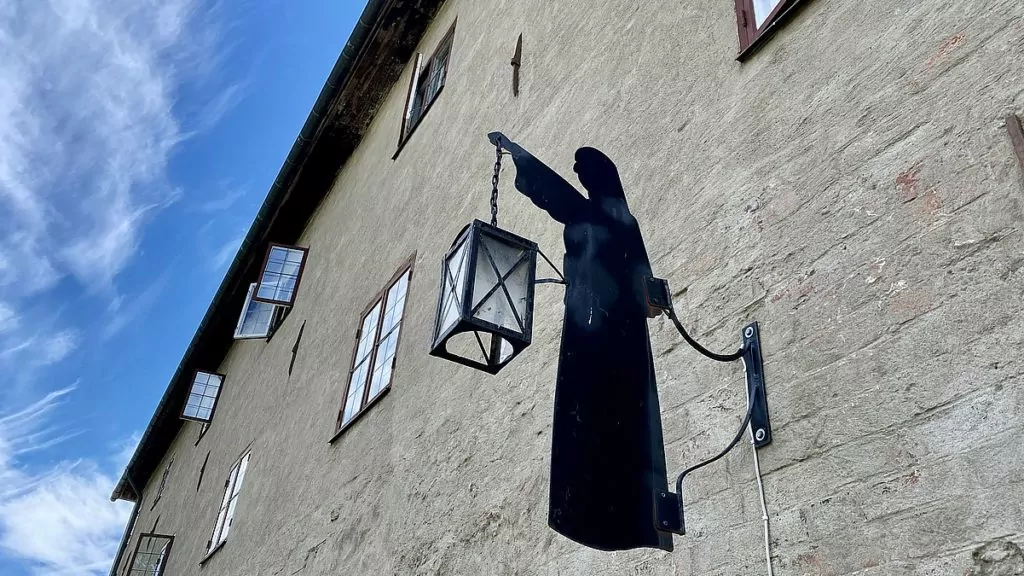
Vadstena is located on the eastern shore of Lake Vättern, 16 kilometres southwest of Motala.
What can you do in Vadstena?
So, what can you see and do in Vadstena? This lovely town offers both beautiful surroundings and lots of history. Here are our top tips on what to see and do in Vadstena.
1. learn about St Birgitta
St Birgitta is perhaps one of the most important people in the history of Vadstena. Birgitta was born around 1303 as Birgitta Birgersdotter. Even as a child she had visions, but it was only after her husband passed away that she had visions of a monastery. In 1349, she travelled to Rome to get permission from the Pope to found a new monastic order.
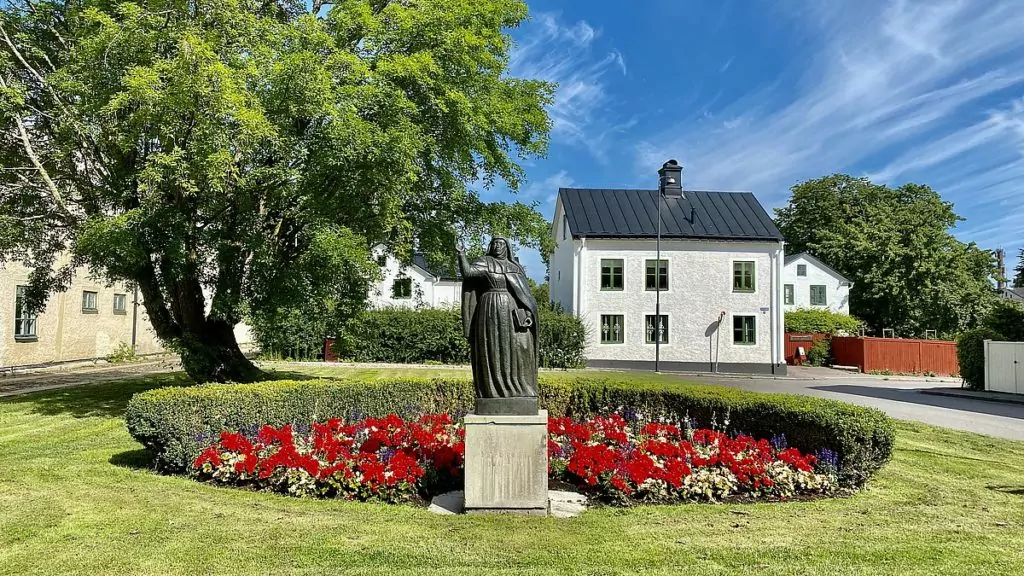
2. Discover the Vadstena monastery area
The Vadstena Abbey area includes a variety of historic buildings. These include the monastery church, the nunnery, the ruin park with walls from the monastery's parlour, the monastery garden and the old water tower. Here you can stroll around and feel like you are surrounded by history from all sides.
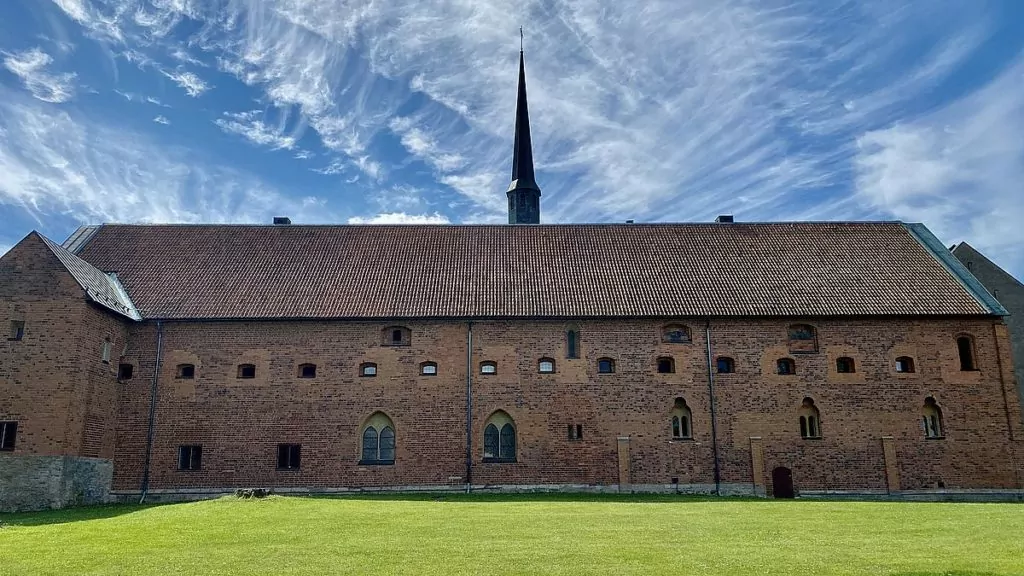
3. Stroll in the ruin park
The ruin park contains the foundations of the monastery's speech centre. The monks and nuns were clearly separated, but here they could talk to each other through grilles. In addition, curtains were hung in front of the bars so that there could certainly be no physical or visual contact between the sexes.
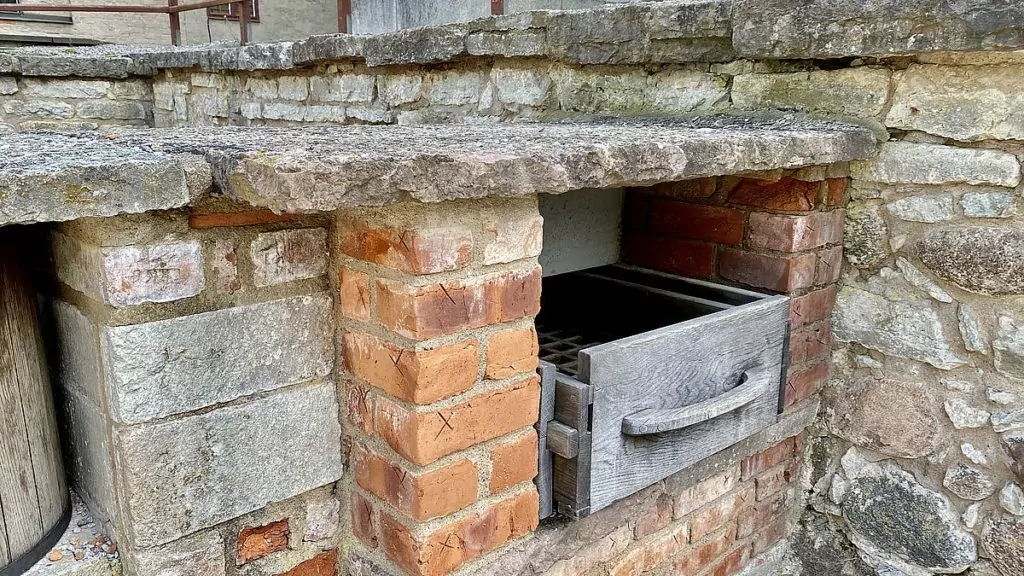
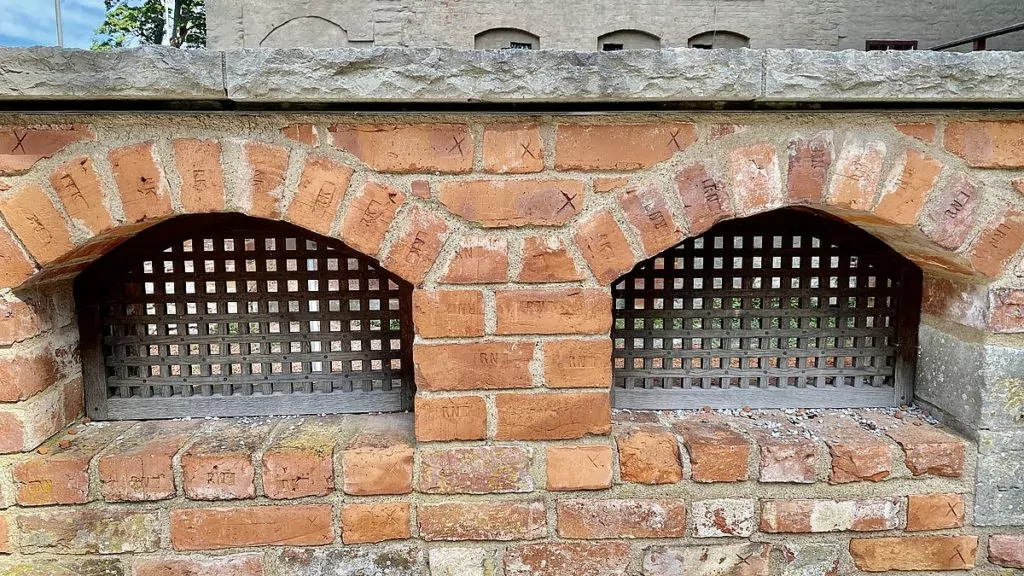
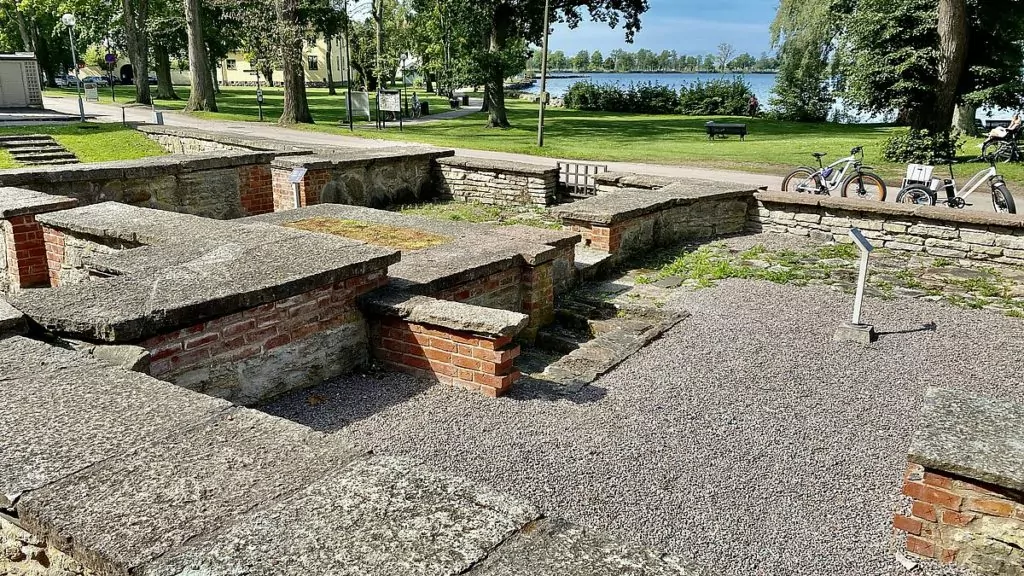
4. Visit the Sancta Birgitta Monastery Museum
In the monastery area you will also find the Sancta Birgitta Monastery Museum. Here you can learn more about the life of the nuns in general and Birgitta's life in particular. For example, did you know that Birgitta made several long pilgrimages in Europe?
At the age of 68, Birgitta began her dream of making a pilgrimage to Jerusalem, the Holy Land. She fell ill during the journey and died a year later in Rome. Work then began on bringing her remains back to Sweden and Vadstena. The coffin used for this is now in the museum.
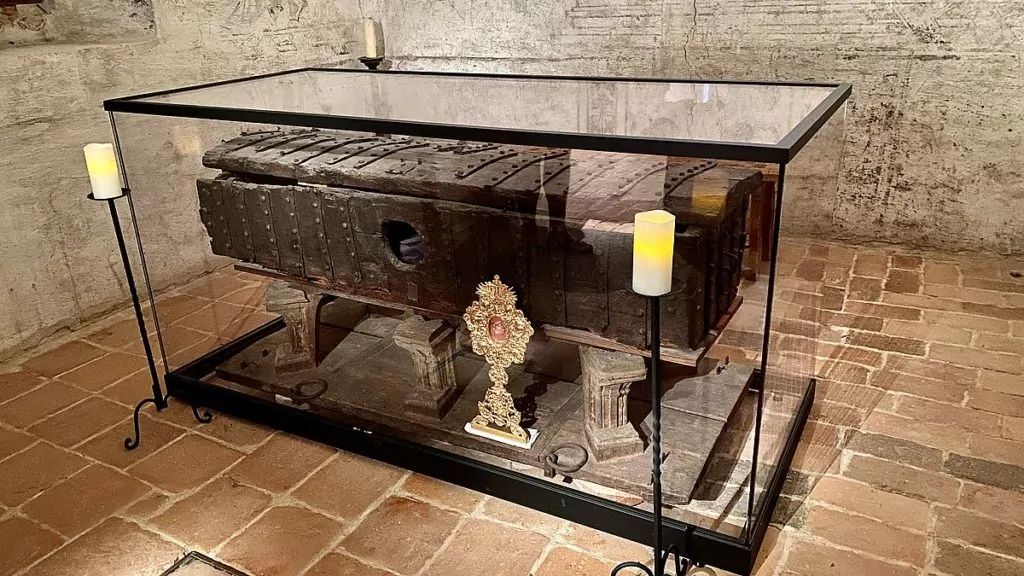
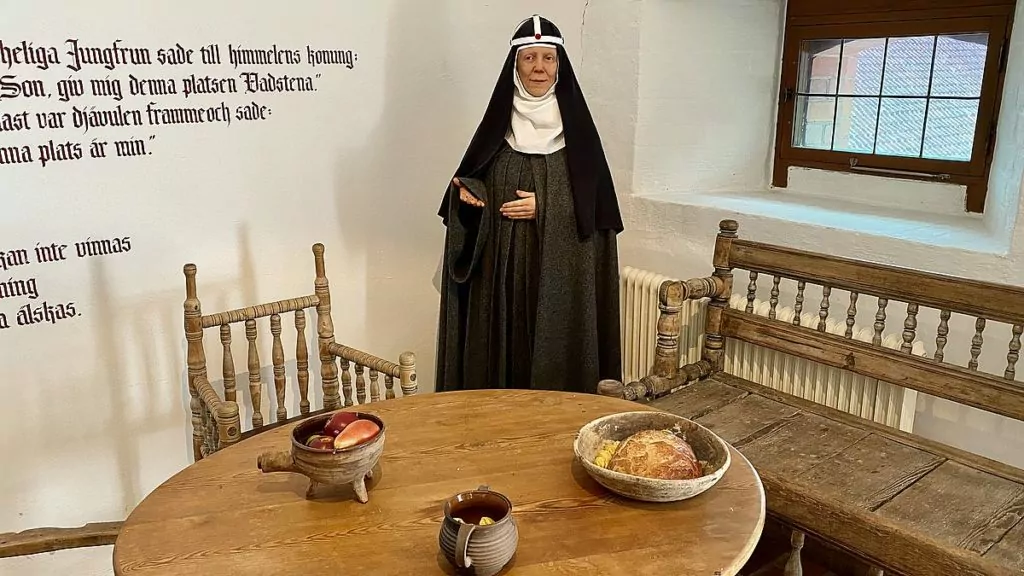
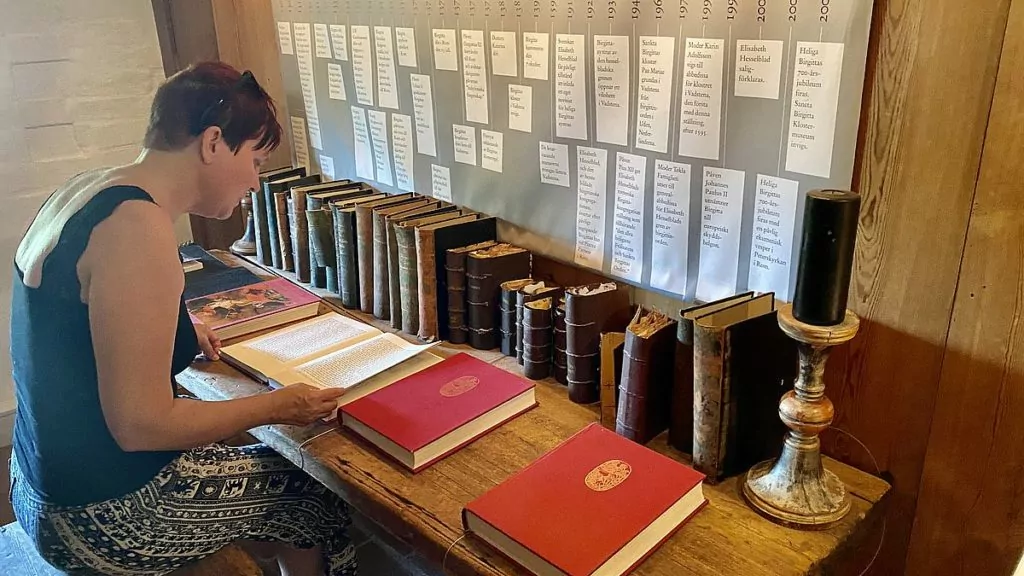
5. Admire Vadstena Abbey Church
Vadstena Abbey Church was built according to Birgitta's precise instructions. It took almost 60 years to build the church, which was consecrated in 1430. Since then, people have flocked to the church, making it one of Europe's most important pilgrimage destinations.
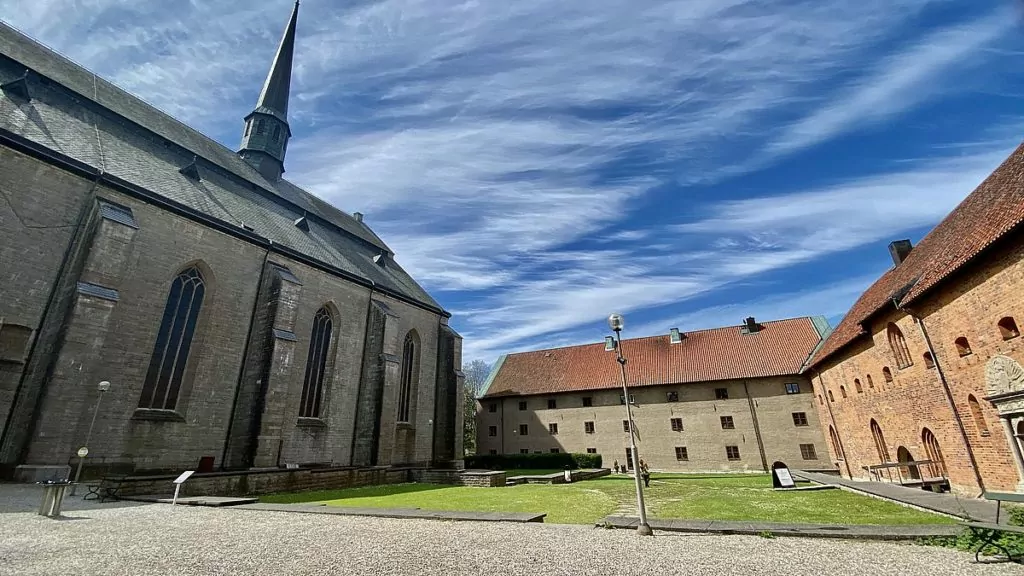
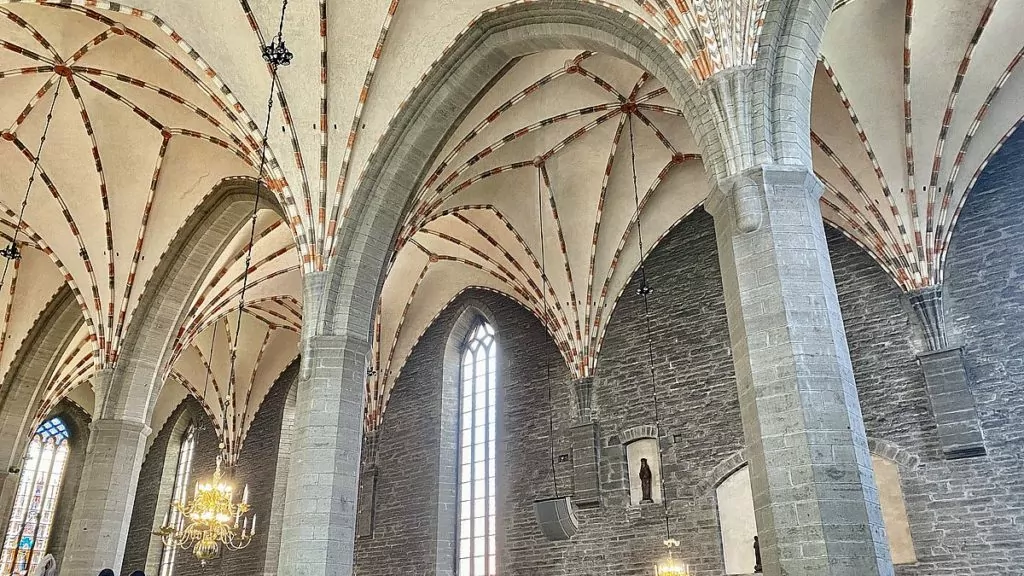
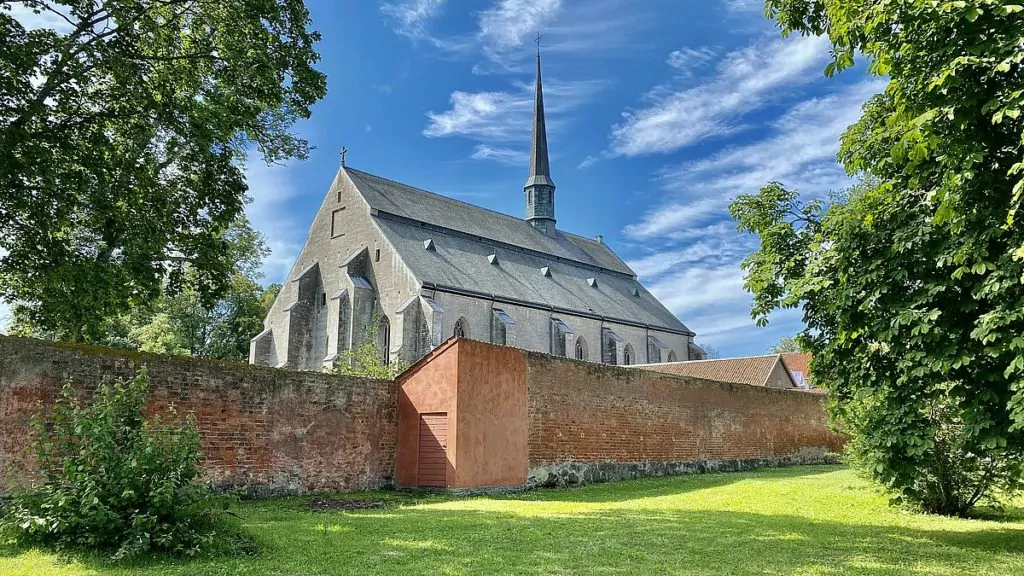
6. Coffee at the Monastery Café
After the visit to the monastery area, we needed a break and some energy. We each had a meatball sandwich at the Monastery Café, and then we were ready for more history.
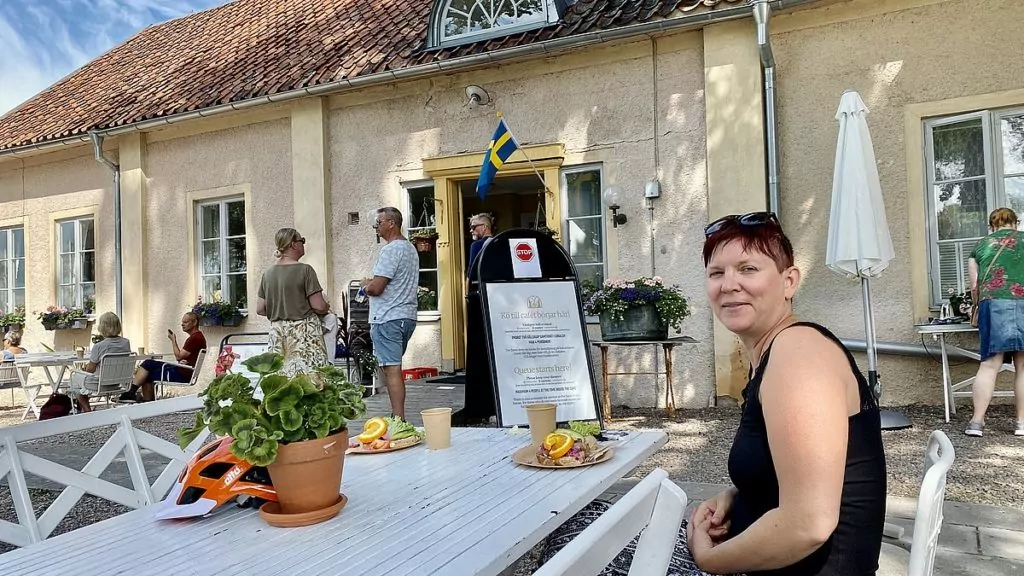
6. Take a tour of Vadstena Castle
We continued to Vadstena Castle, which is possibly even more magnificent than the monastery area. The castle was built as a defence facility by King Gustav Vasa in the 16th century. During the reign of Johan III, the castle was transformed from a defensive fortress to a continental Renaissance palace.
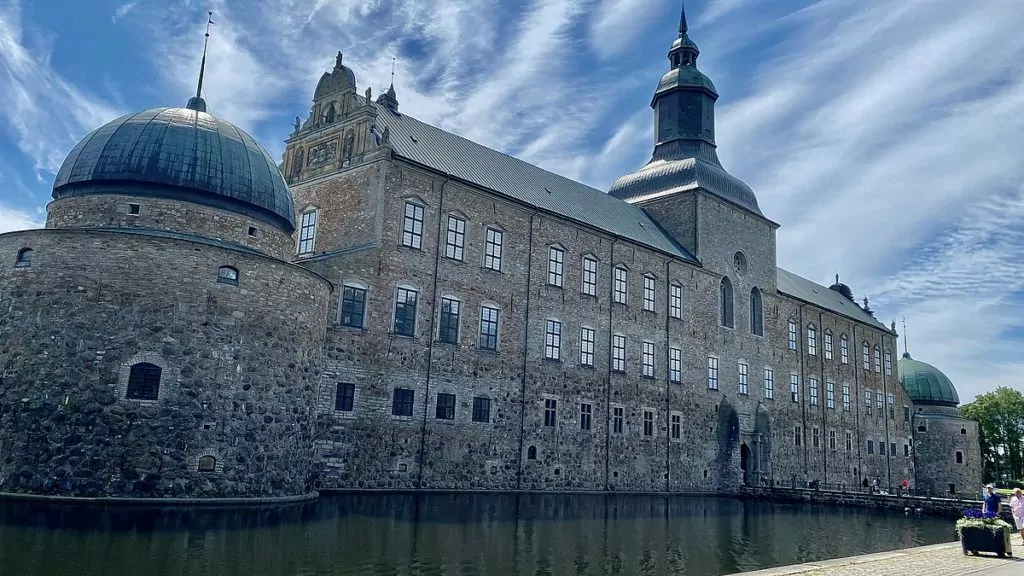
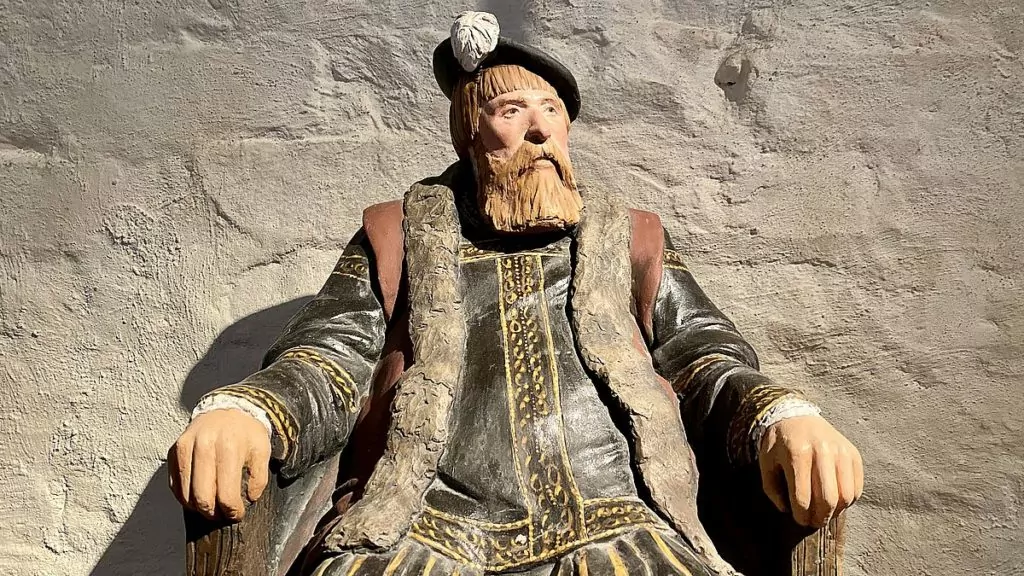
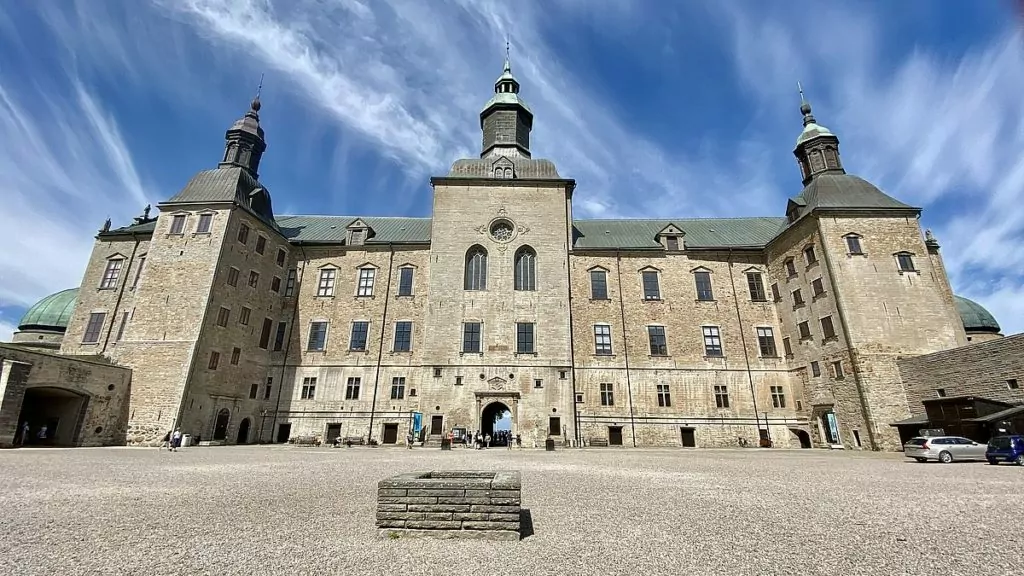
The castle is truly magnificent, and walking around it, you're constantly seeing it from new and fascinating angles. The sturdy towers are reflected in the waters of the moat and small leisure boats chug around carefree.
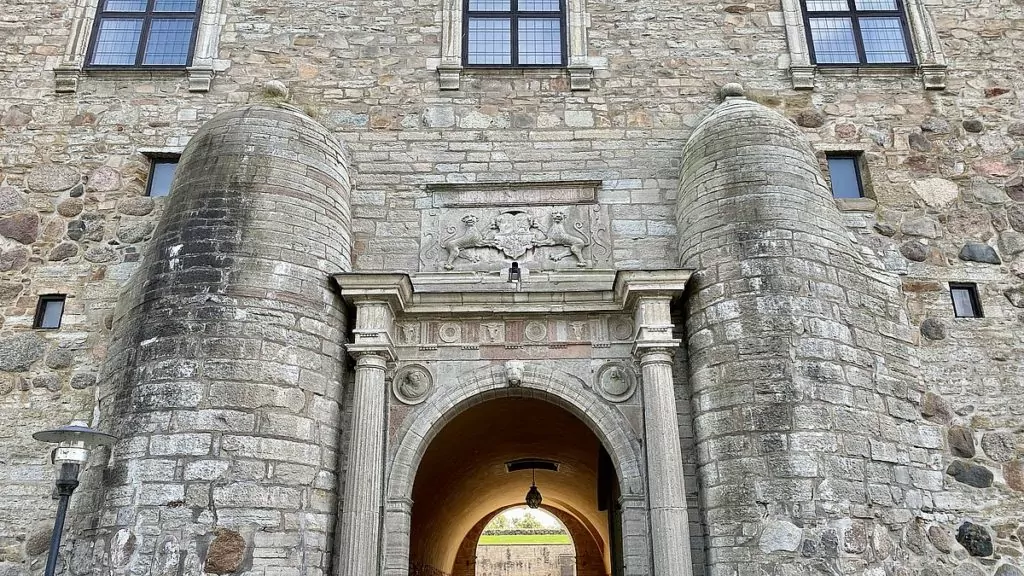
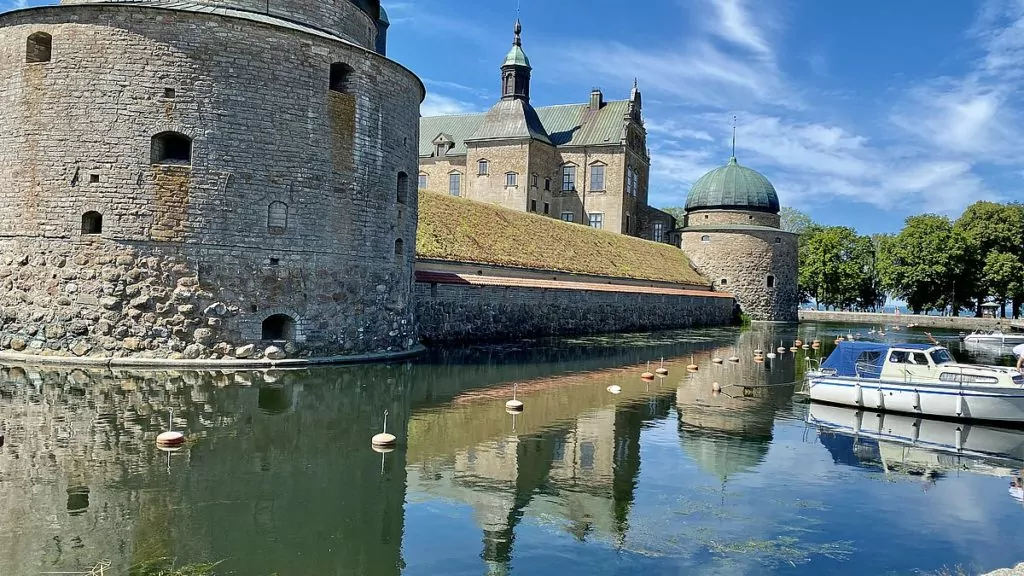
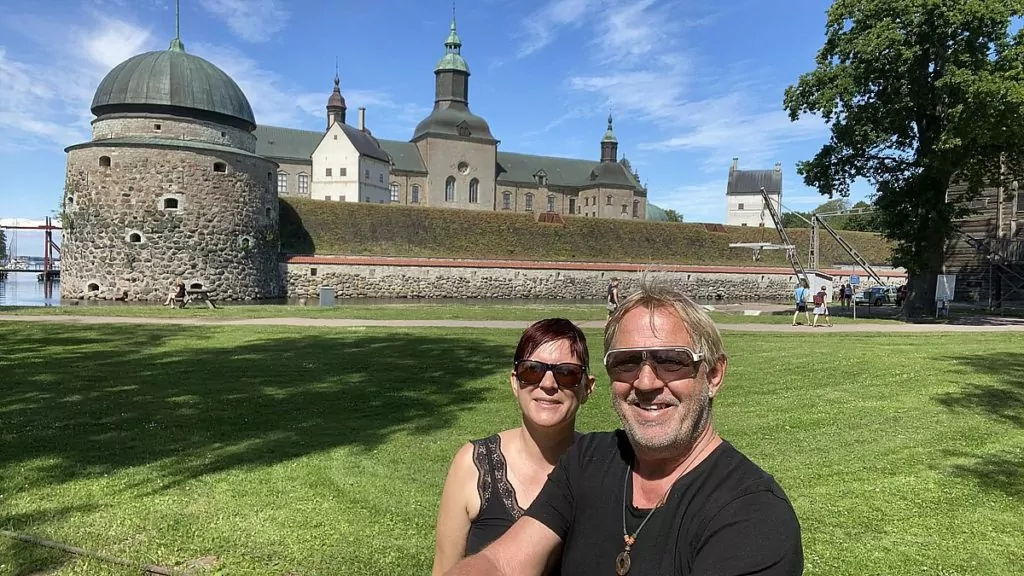
You can also, for a fee, visit the interior of the castle and this is recommended. Each room is more splendid than the next and there are a number of interesting details. For example, you can check out the wedding hall, the bedchamber and the castle church. Children can try to solve the "Gustav Vasa riddle".
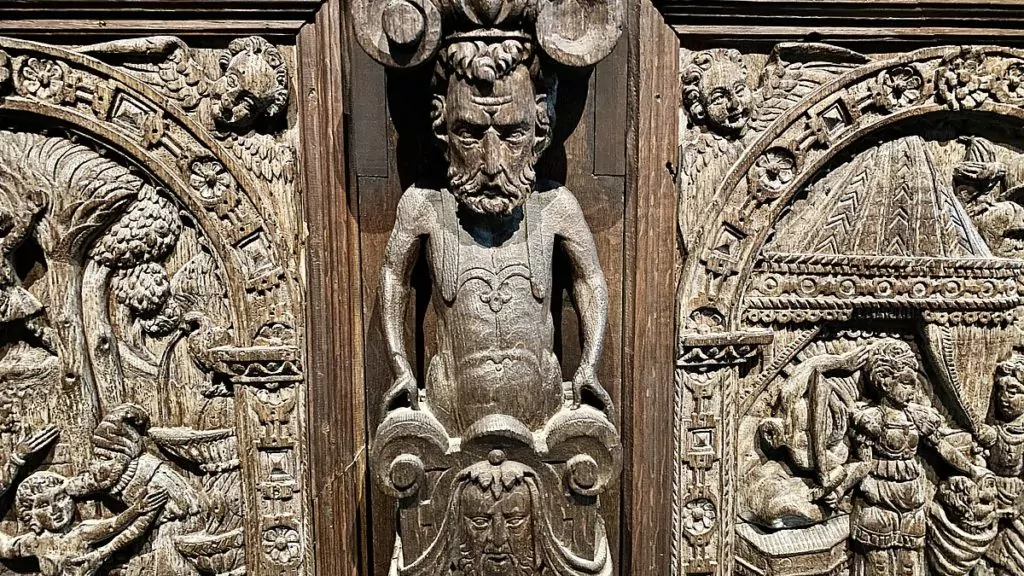
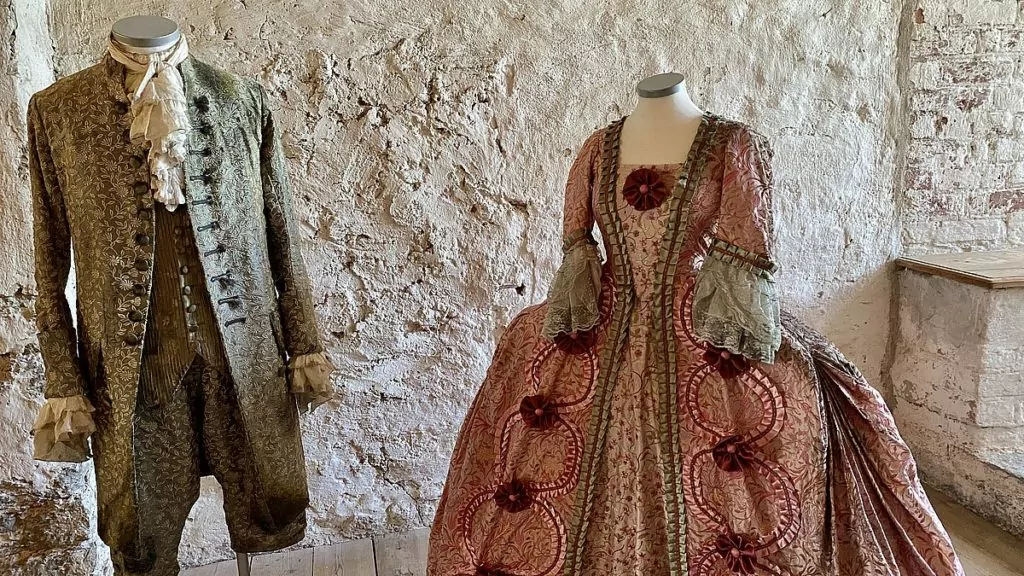
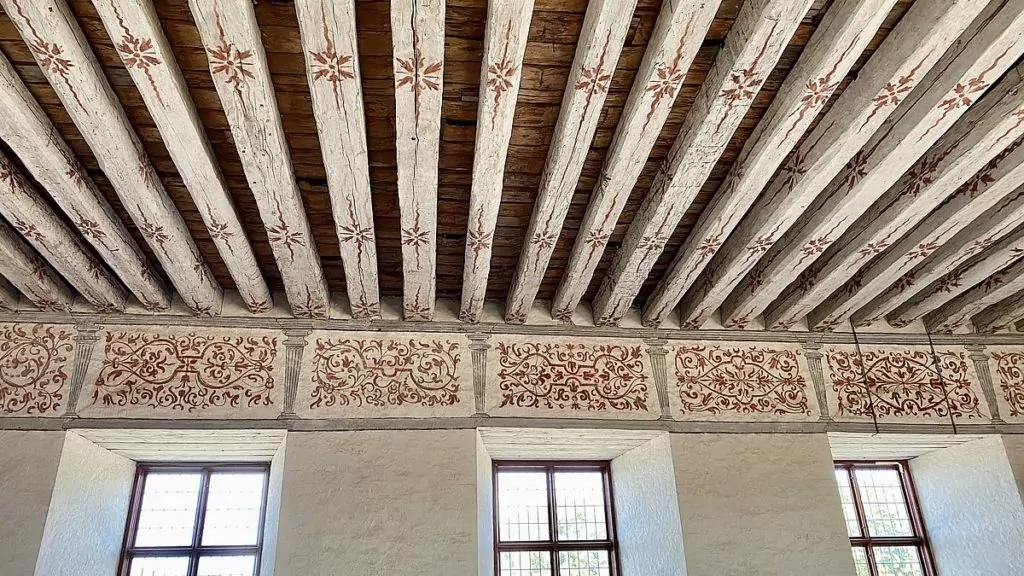
7. Enjoy the seafront
When you have had enough of history and culture, and if the weather is nice, you can enjoy the promenade. It's really nice on the shores of Lake Vättern!
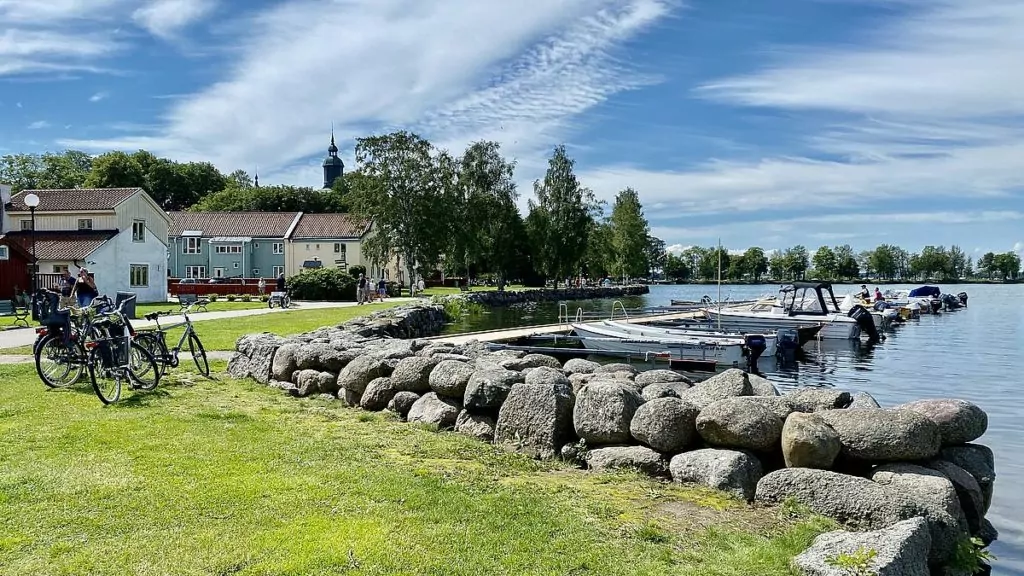
8. Walk in cosy neighbourhoods
We also went for a walk through all of Vadstena's cosy neighbourhoods. The houses are low and characterised by old-fashioned charm. Many people sat on the outdoor seating on the square or walked among the shops on Storgatan.
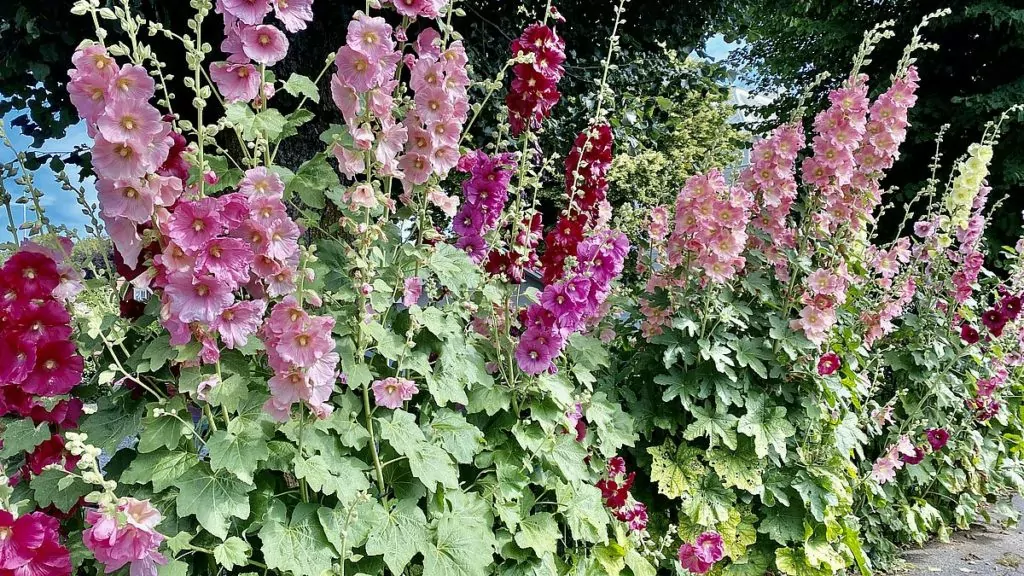
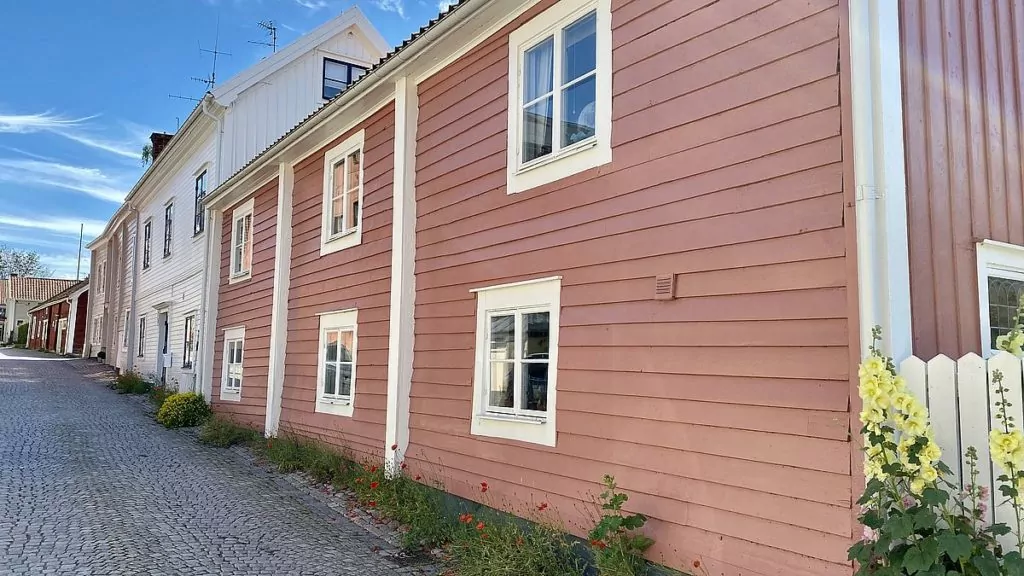
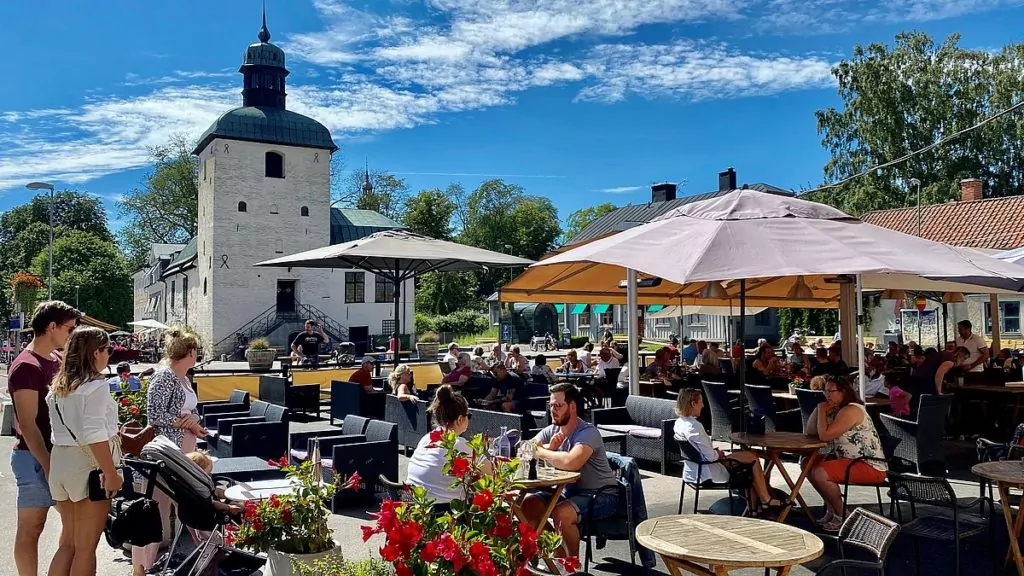
9. Shopping at Ladugård 206
On the way from Vadstena, we took the opportunity to turn into Ladugård 206, which is located a few minutes outside of town. There is a restaurant and a shop with charcuterie and delicacies. Nice!
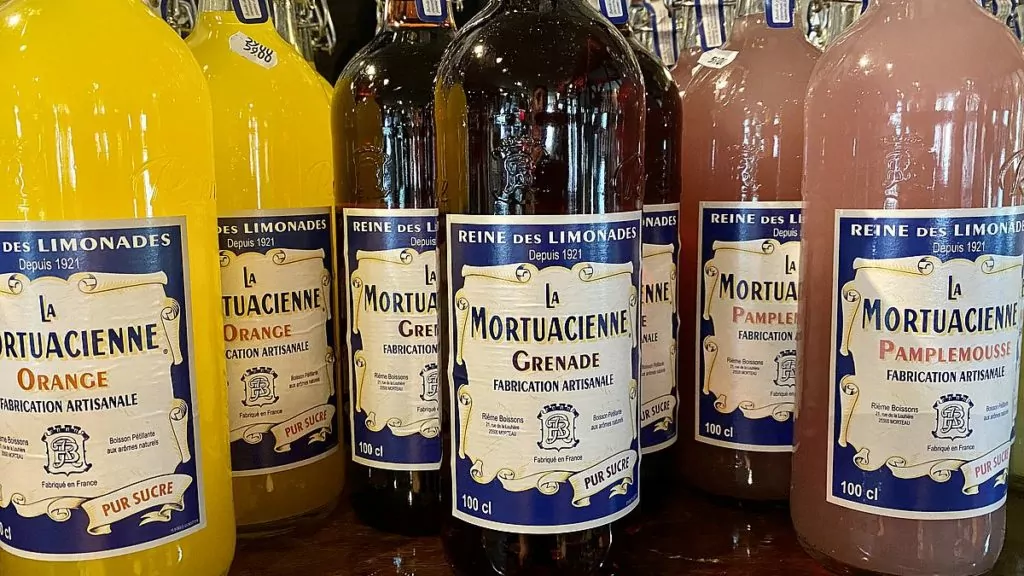
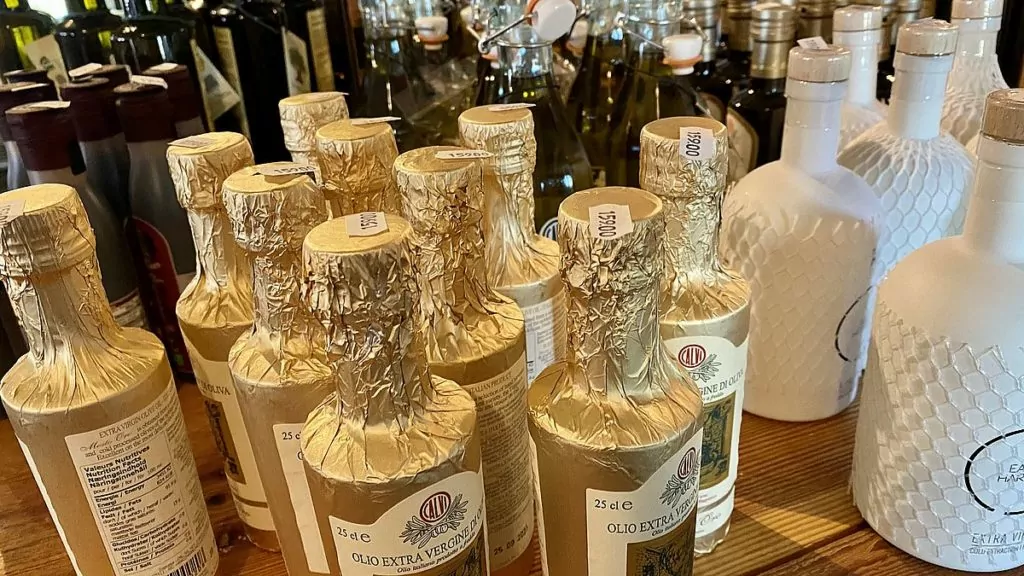
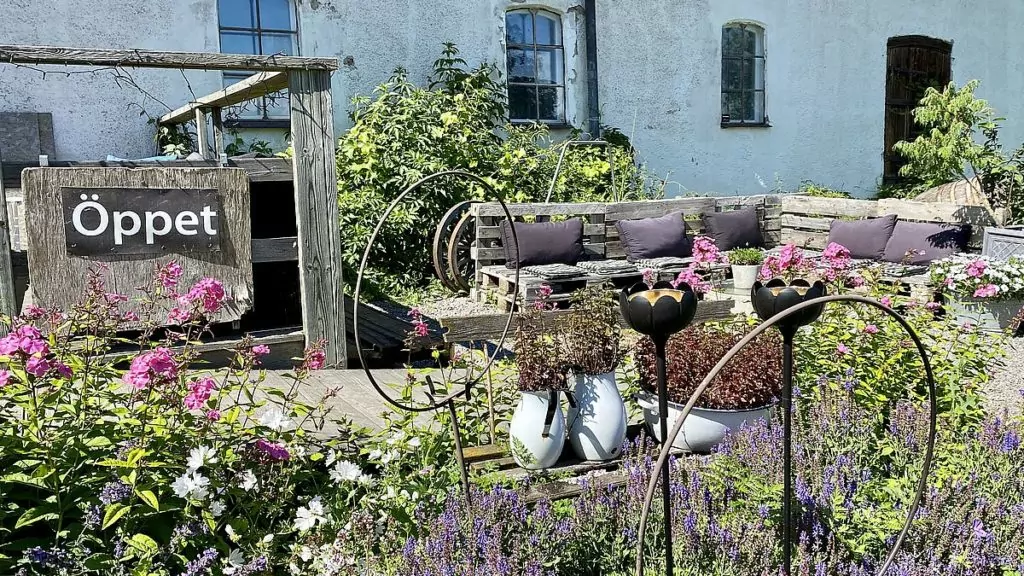
10. Eat Vättern crayfish
We then rolled south towards new adventures, and what did we see? A sign with "Vadstena crayfish". Of course, we couldn't resist! Two buckets of fresh Vättern crayfish followed in the motorhome.
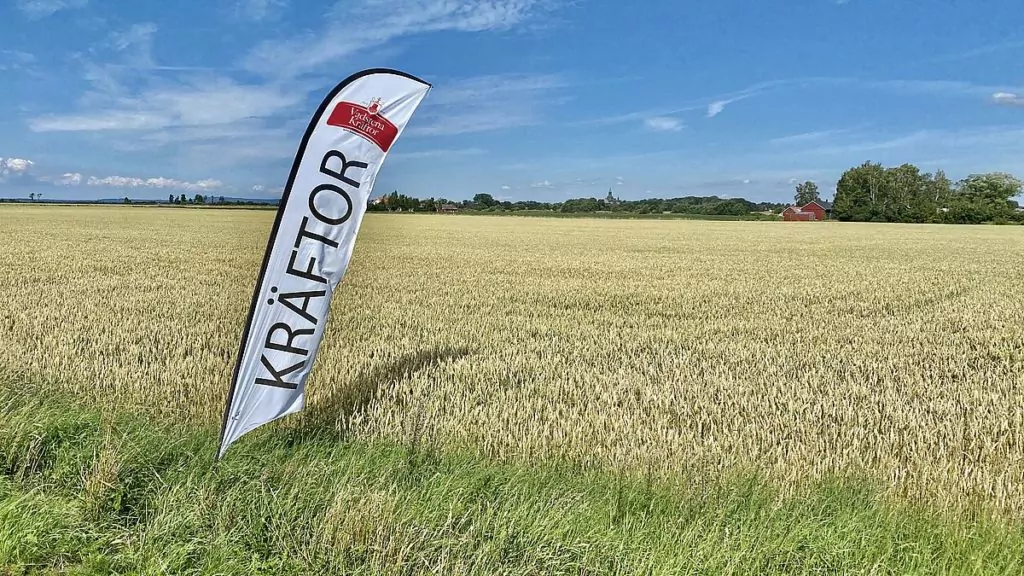
Where can you stay or park your motorhome?
There are of course several different hotels to choose from in Vadstena, and there is also Vadstena campping. If you're travelling by camper van, you can park overnight at the car park in Lilla hamnen, not far from the castle. As usual, we arrived too late to find a free spot, so we had to drive further out of town.
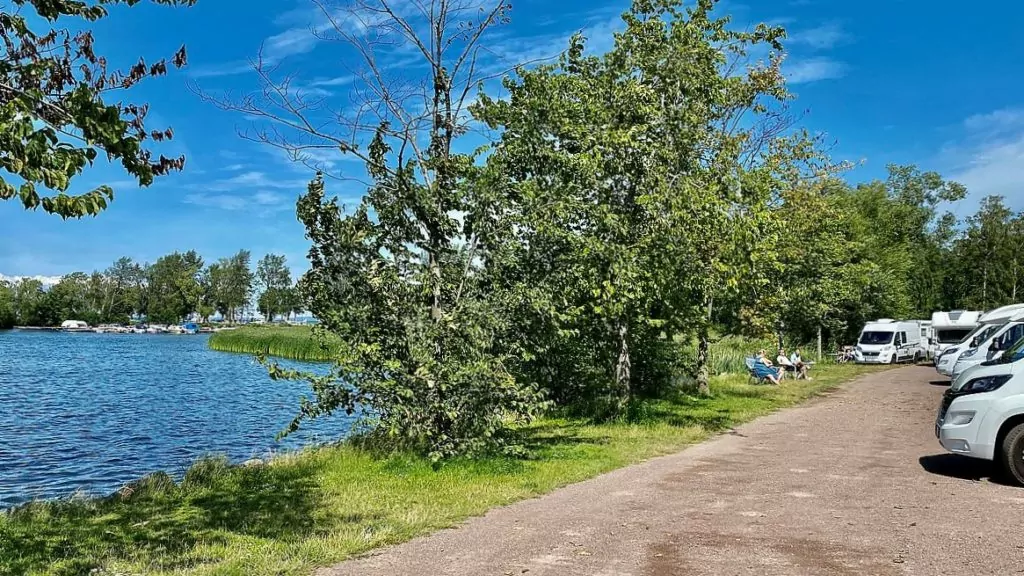
More to see and do in Vadstena
We really liked Vadstena. What a wonderfully cosy little town, which also has an incredible amount of history to offer. We were very happy with our day. If you want even more ideas for things to see and do, here are some more tips we got from the local tourist office:
- The Toy Museum at Slottsgården
- Guided city tours and garden tours
- The King's Train - the "Little Train" that takes you around the city with a guide.
- Galleries and studios
- Home-made coffee at the Pilgrimage Centre
- Restaurant Hörnet, featured in the White Guide
- Cycling dressin
- Adolfsnäs Commercial Garden
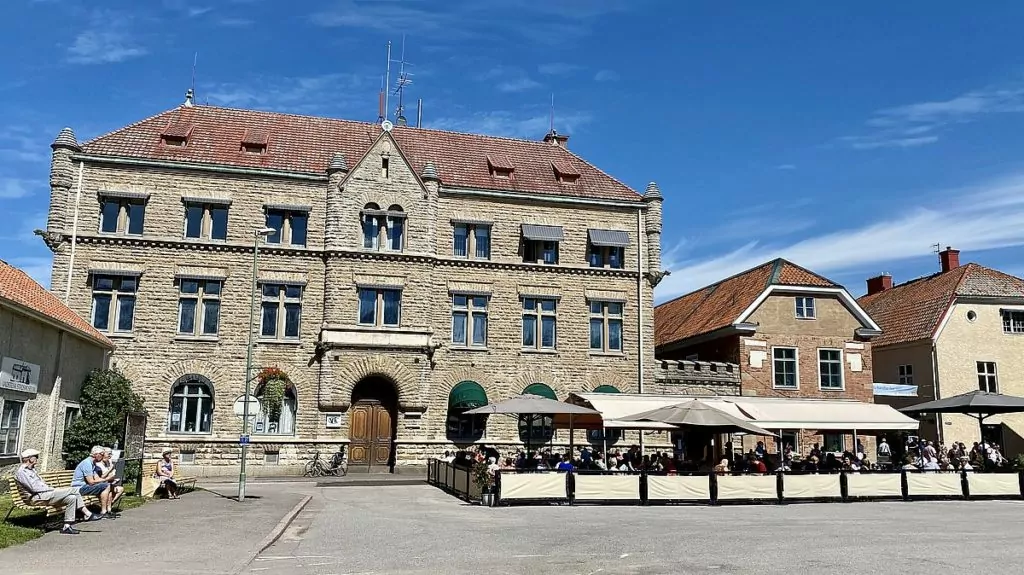
More to see in the neighbourhood
Just north of Vadstena you will find Motala, with locks on the Göta Canal, the Motor Museum and the long sandy beach of Varamon. Nearby you will also find charming Borensberg. If you are travelling south instead, you can visit Alvastra monastery ruins and charming Gränna.
Parking space in Valdemarsvik's guest harbour - the end of the campervan trip.
The parking lot in Valdemarsvik's guest harbour - it was the last stop on our month-long motorhome trip in the south....
Sandvik campsite - and meeting with motorhome friends
Yesterday we arrived at Sandvik's campsite, located on Lake Roxen outside Linköping. This...
Ekenäs Castle in Linköping - ghost castle with 7 ghosts
Ekenäs Castle is a beautiful fairytale castle in the municipality of Linköping. There is an interesting...
Eight castles in Östergötland - well worth a visit
Guest writer: Cornelia Tonéri My name is Cornelia Tonéri and in everyday life I run the travel blog litemerarosa.se with a focus ...
Old Linköping - a charming open-air museum
Gamla Linköping is a charming open-air museum that shows Linköping from the past, with city blocks, houses, shops and...
Mem - The Baltic Sea Gateway to the Göta Canal
Mem is a small town by the deep bay of Slätbaken, just outside Söderköping. The small town...
Things to do in Norrköping - 16 attractions and experiences
What to see and do in Norrköping? Norrköping is an exciting metropolis that offers...
Bergs locks - Göta Canal's mighty lock staircase
The Berg locks in the Göta Canal include a total of 11 locks, and it's really fascinating to see the...
Alvastra monastery ruins - and the Smoke Stone in Smoke
Alvastra Monastery Ruin is the ruin of the monastery where St Birgitta once received her...
Östgötadagarna on four wheels - tips for pitches and excursions
Guest writer: Cornelia Tonéri Never before does a landscape reveal itself in such a way as during events...
Stegeborg - castle ruin, harbour, tavern and campsite
Stegeborg is located about 2 kilometres from Söderköping, and here you will find a ruined castle from...
Midsummer's Eve at Ekön campsite
This year it was midsummer at Eköns camping, on the coast outside Valdemarsvik. We travelled here together...
Finspång castle - castle garden and mill environments
Finspång Castle was on our bucket list because it is so beautiful. The castle offers a ...
Svenska Östergötlandsvägen - FREEDOMtravel Themed roads
Svenska Östergötlandsvägen is a themed road that takes you through Östergötland, to experience the beautiful...
Borensberg on the Göta Canal - locks and delicacies
Borensberg is a cosy little town on the Göta Canal, where you can see one of the canal's...
Söderköping - 9 tips for things to see and do
Söderköping is an idyllic and picturesque little town on the Göta Canal. We offer nine tips...
Göta Canal by motorhome - big guide with tips
Göta Canal by motorhome, how does it work and what can you see along the way? This summer...
Kolmården - Aunt Anna walks around the world
Guest writer: Anna Nilsson Spets I search the archives of my memory and think about when I was on...
What to do in Linköping - 13 sights and experiences
What to see and do in Linköping? Linköping is a pleasant city that offers...
Vreta Abbey - and Stjärnorps Castle ruins
Vreta Abbey in Östergötland is one of Sweden's oldest monasteries. Today there is a ruined monastery ...
What to do in Motala - 9 tips for the capital of the Göta Canal.
What to see and do in Motala? Motala likes to call itself the capital of the Göta Canal, and...
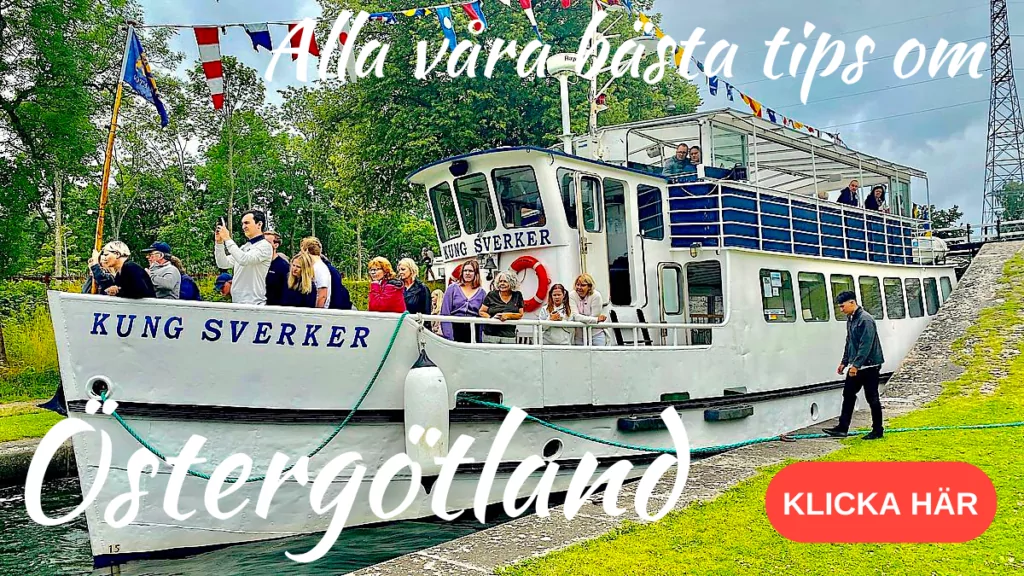
More tips for things to do in Vadstena?
Have you been to Vadstena? How was your experience? Do you have any other tips on what to see and do in Vadstena?
Facts about Vadstena
- Municipality: Vadstena municipality
- County: County of Östergötland
- Population: About 7400 (2020)
- Attractions: Monastery area with monastery church, monastery ruins and castle.
- Activities: Toy museum, city tours, the 'King's Train' and more.
- Parking spaces: Berth in the small harbour
- Camping: Vadstena camping (Hofslagaregatan 11)
Facts about Vadstena Castle
- Opening hours: In summer 2020 (22 June - 9 August) the Castle Museum is open Mon-Sun 10:00 - 17:00. For other opening hours see the castle's website.
- Prices: Adults 90 kr, pensioners/students 80 kr, children/young people 70 kr and children 0-7 years free (2020). The cultural heritage card gives half the price of admission.
- Guidance: Several different guided tours are offered, including a Renaissance walk and a children's walk. See the castle's website for the calendar.
- Read more: You can find more information at the castle's website.
History of Vadstena
- The Iron Age: There are traces of human settlement from this time.
- 12th century: A Romanesque church existed on the site of the Red Tower (St Peter's Church) today. Vadstena was a stop on the pilgrimage to Trondheim and there was a cult of St Olav, that is, in relation to St Olav.
- 13th century: Valdemar Birgersson built the Bjälbo Palace.
14th to 16th century
- 1346: King Magnus Eriksson donated the Bjälbo Palace to St Birgitta, who founded Vadstena Abbey.
- 1400: Vadstena was granted town privileges and became Sweden's largest pilgrimage centre.
- 1550: Gistav Vasa confiscated the monastery's property and closed the monastery.
- 1595: The nuns were forced to leave the convent.
17th to 18th century
- 1637: The monastery began to be used as a home for disabled soldiers. The residents earned extra money from lace making, which led to Vadstena's lace rukte.
- 1753: The monastery premises began to be used as a prison, and the castle was used as a storehouse.
19th to 20th century
- 1829: The monastery began to be used by Vadstena Hospital.
- 1848-1853: The harbour was expanded after the construction of the Göta Canal and the increase in population.
- 1874: The Wadstena Fogelsta railway was opened.
- 1945: Vadstena Folk High School was established in the former monastery.
- 1954: The Birgitta Foundation was given the right to dispose of the monastery area except for the monastery church.
Facts about the Sancta Birgitta Monastery Museum
- Opening hours: Summer 2020 (1 June - 16 Aug), daily 11:00 - 17:00.
- Prices: Adults 80 kr, children/youth 4o kr and children 0-7 years free. The cultural heritage card gives half the price of admission.
- Guidance: There are daily themed tours. See the museum's website for times.
- Read more: You can find more information at Monastery Museum website.
Finding Vadstena
- Car: If you are coming from Jönköping, take the E4 motorway north and turn off towards Vadstena in Ödeshög. If you come from Motala, drive south on road 50 and turn off towards Vadstena at Trafikplats Södra Freberga.
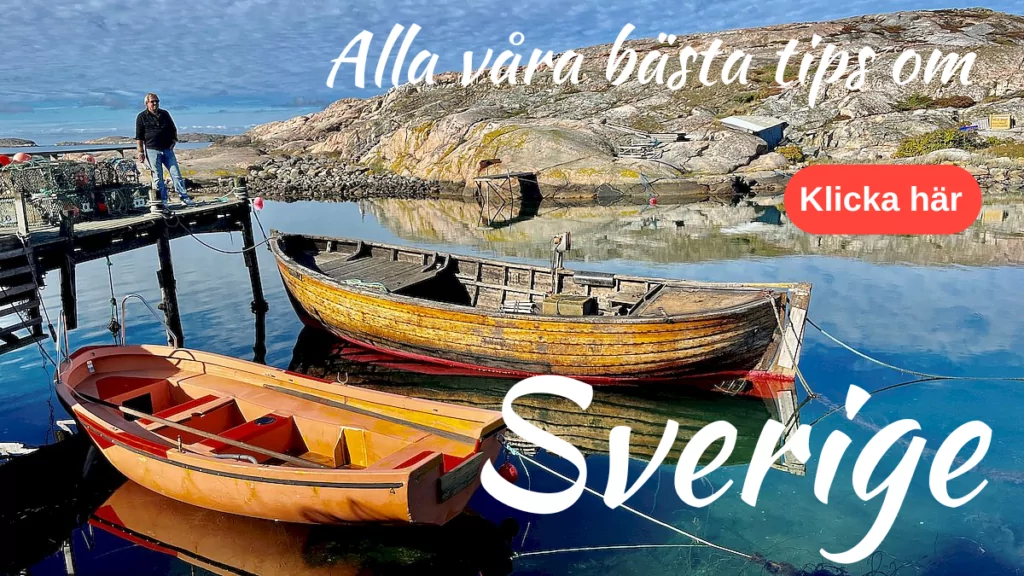

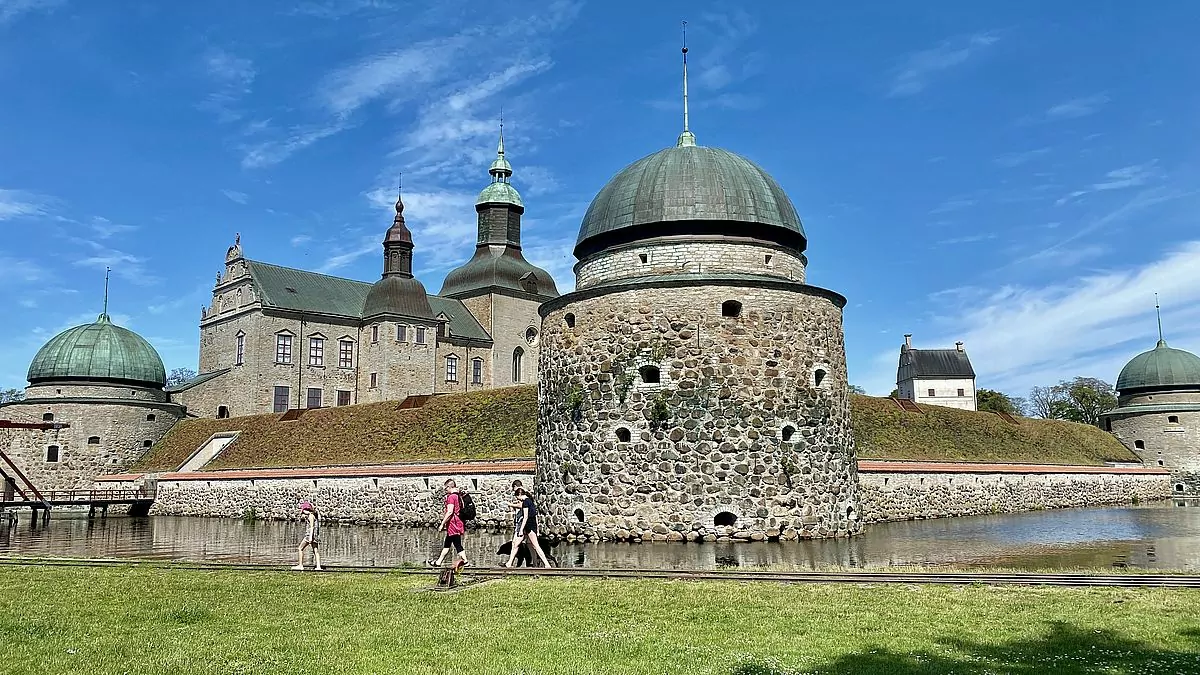










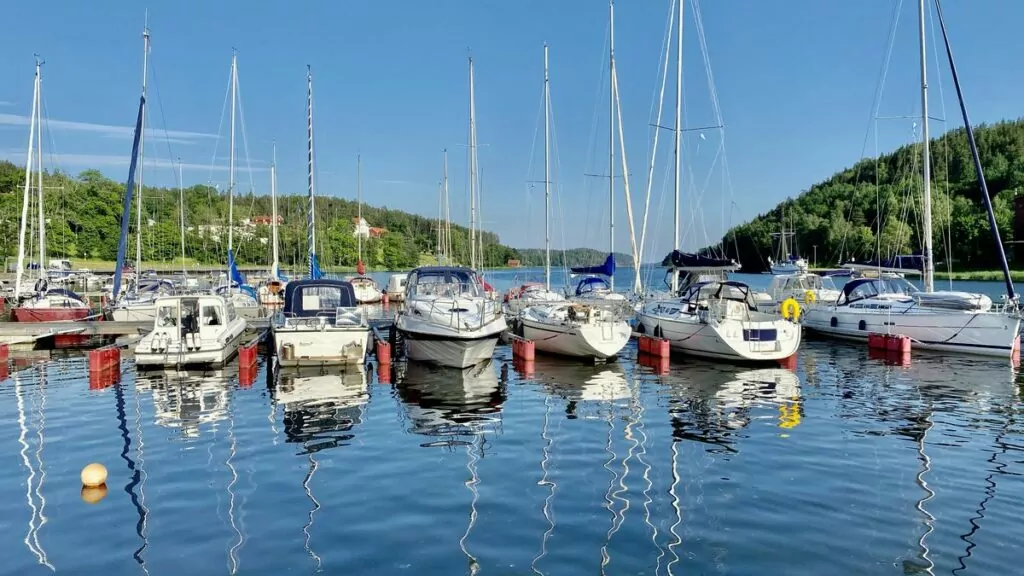
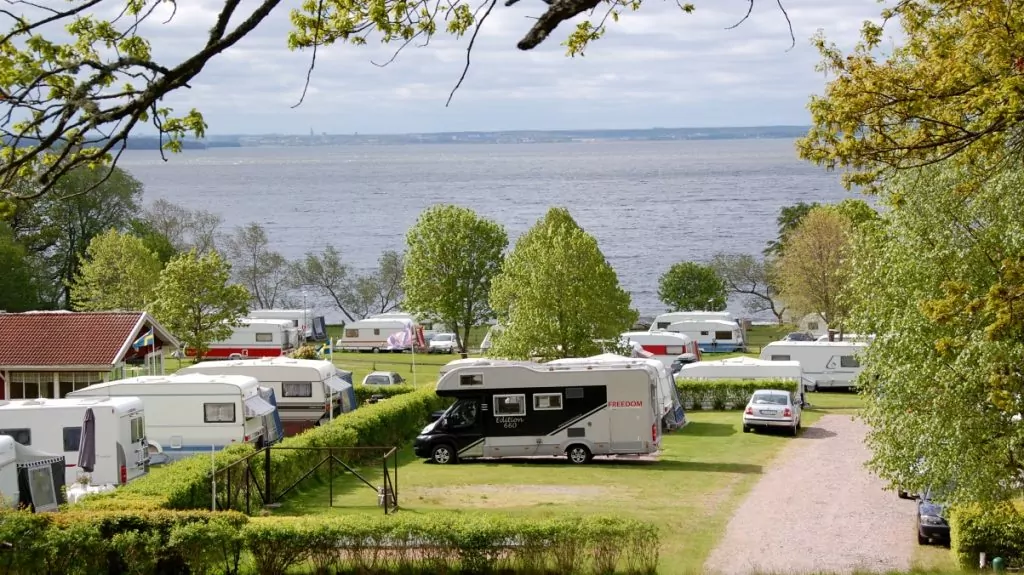
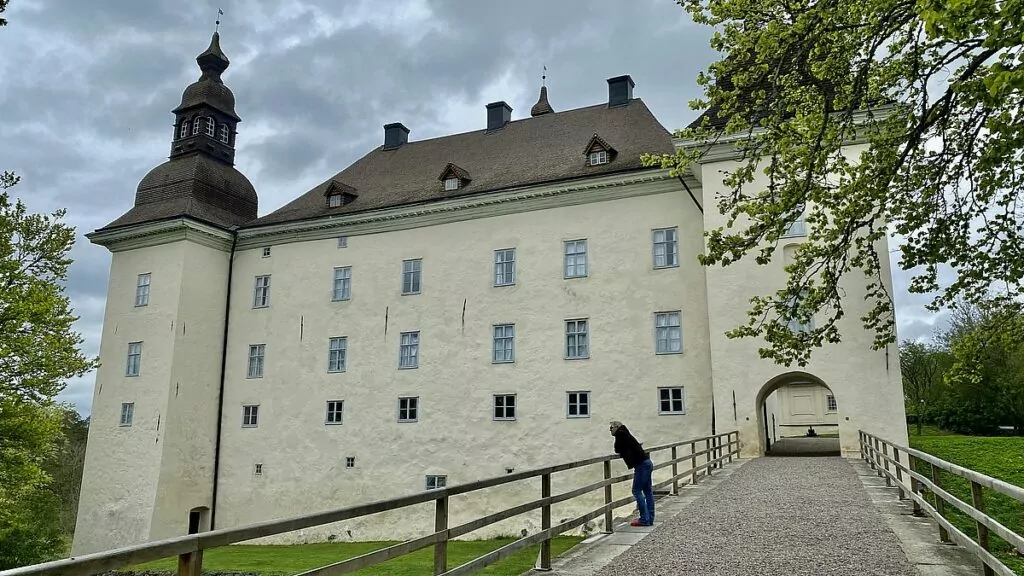
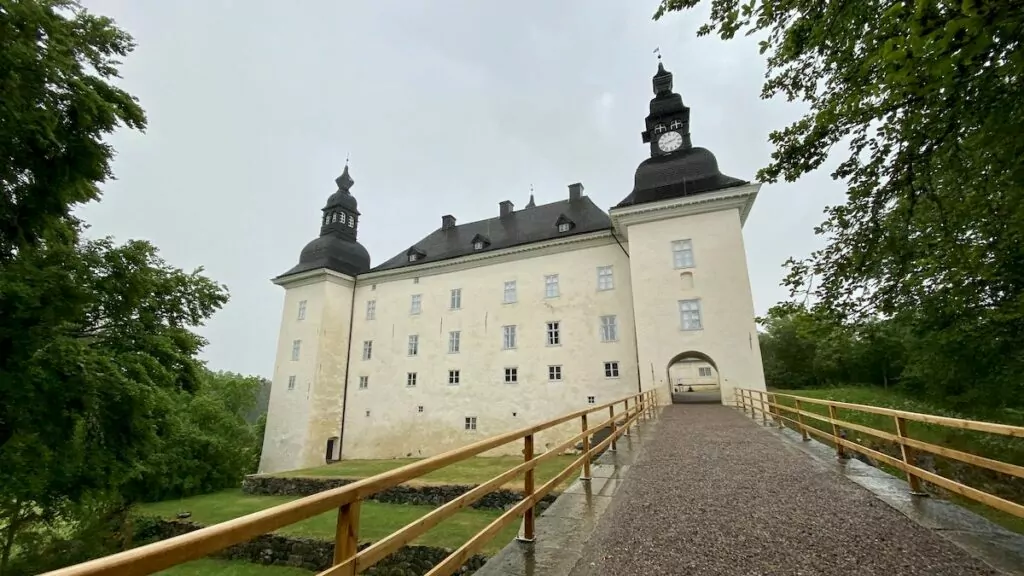
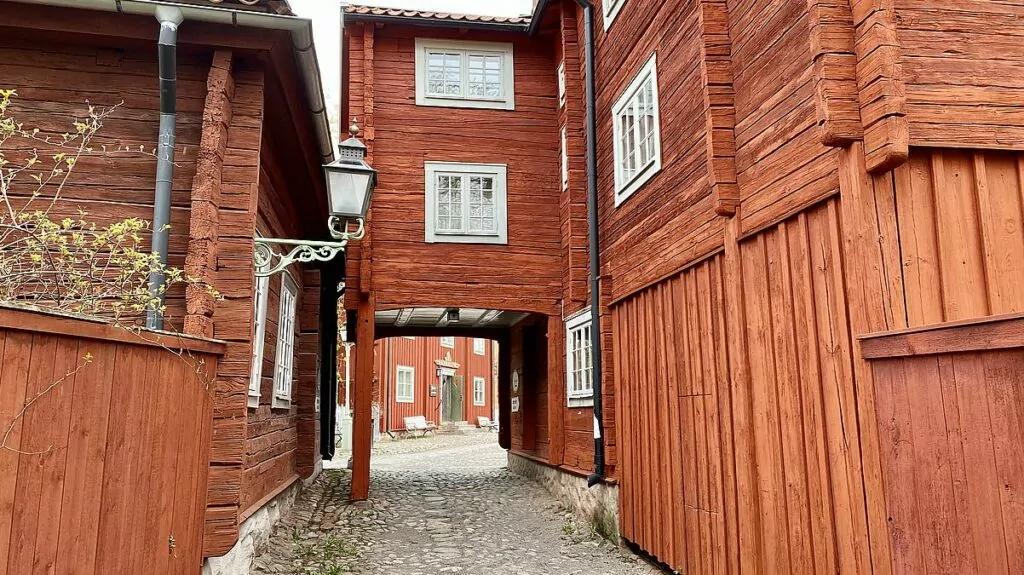
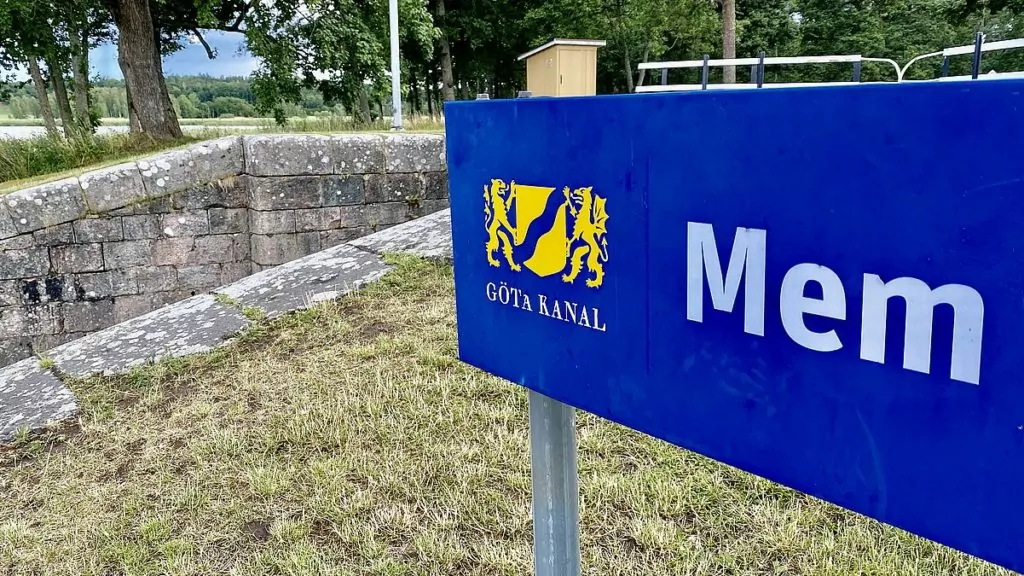
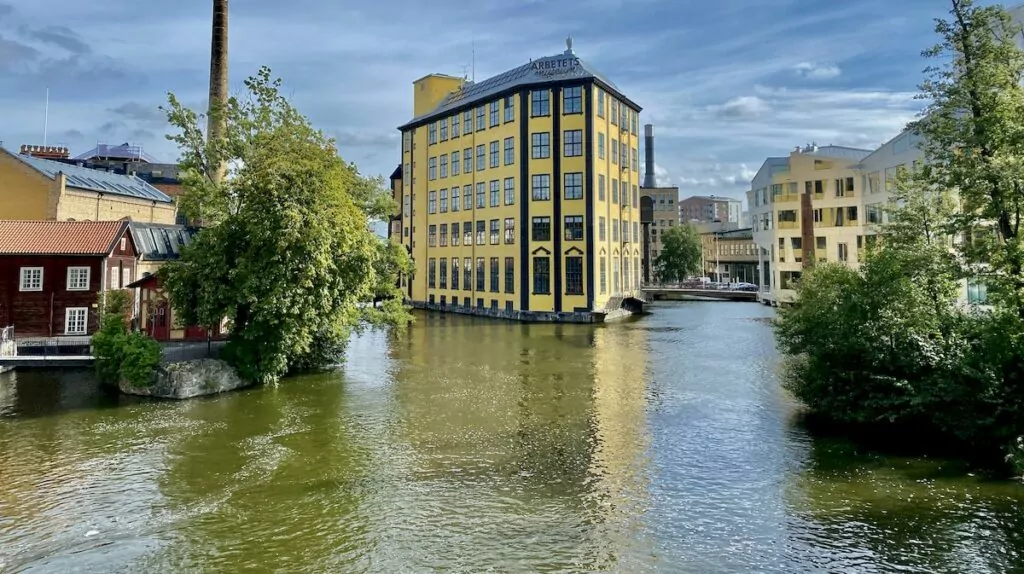
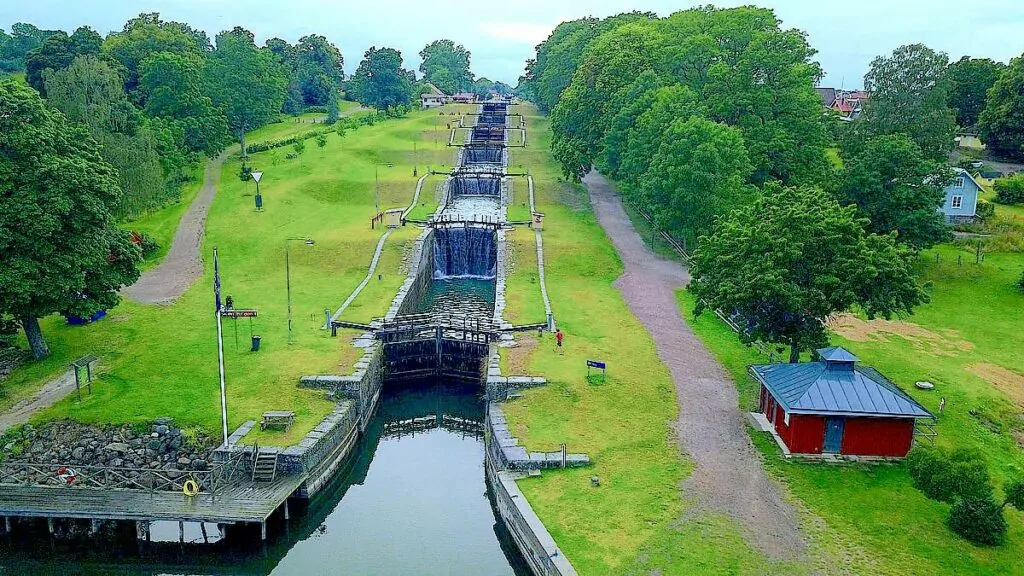
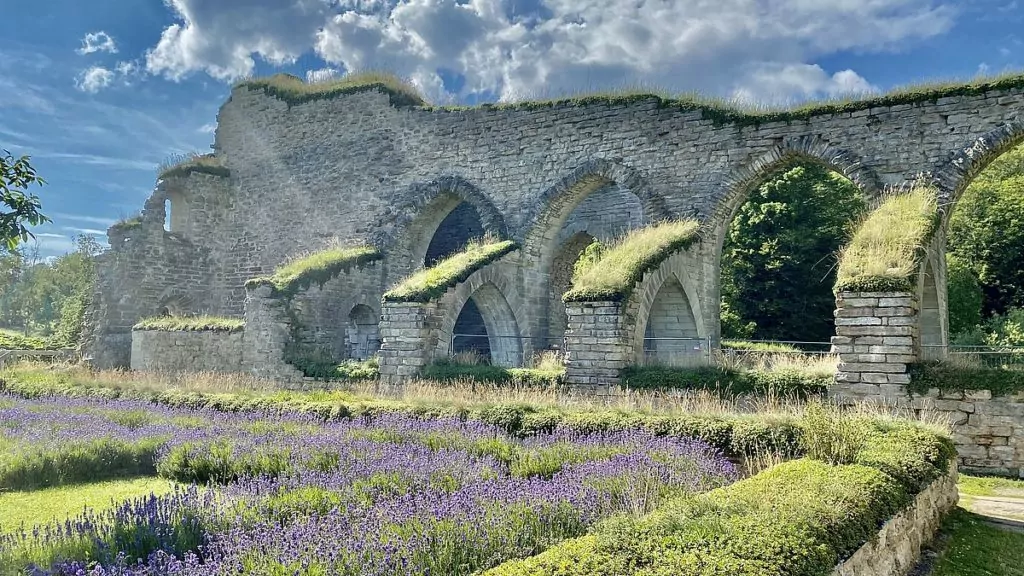
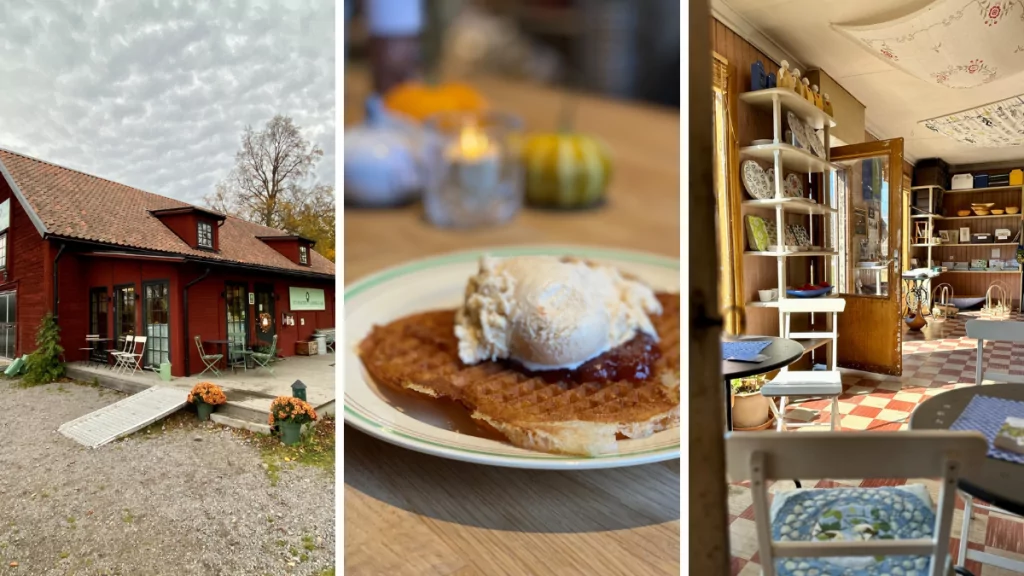
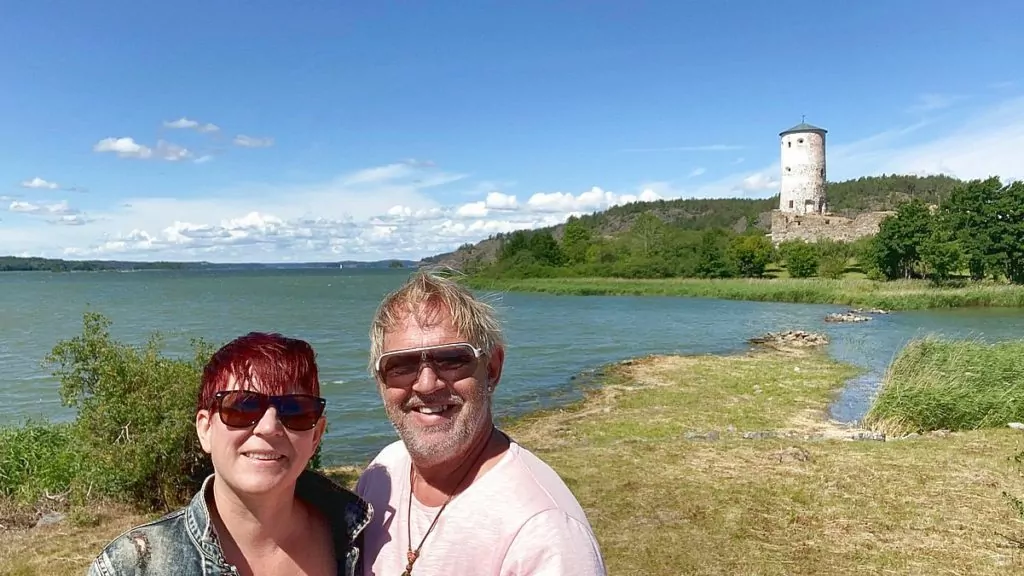
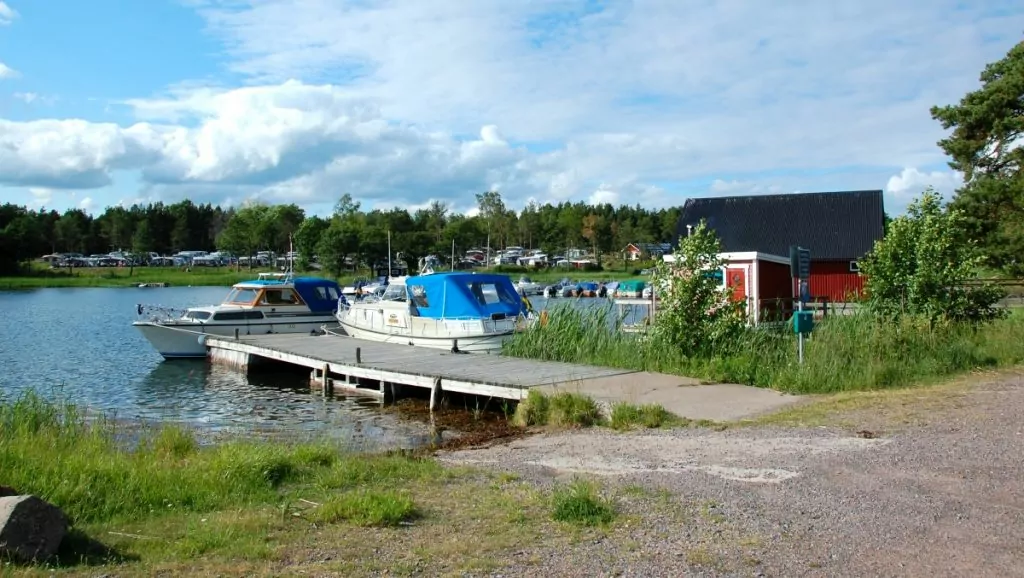
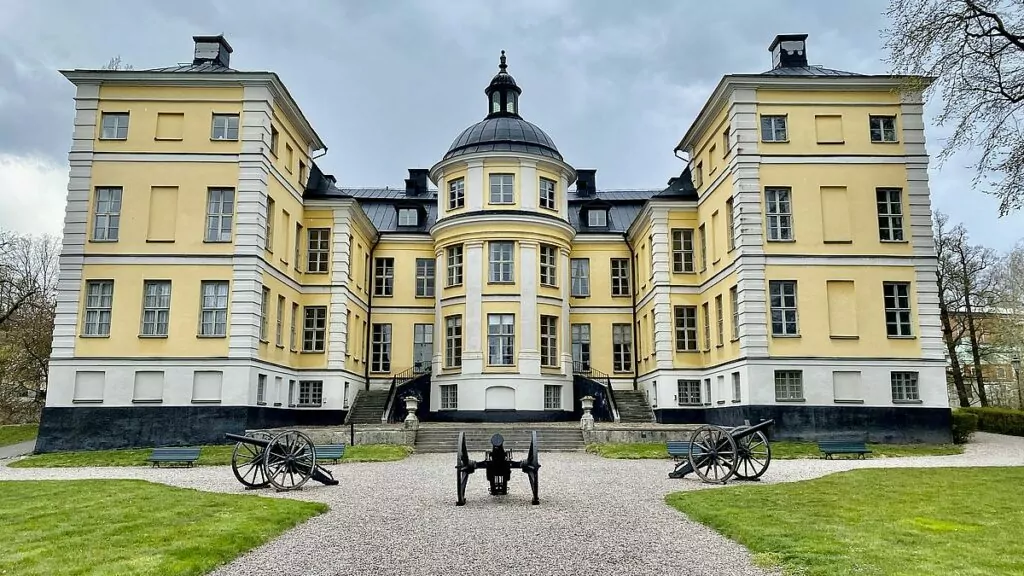
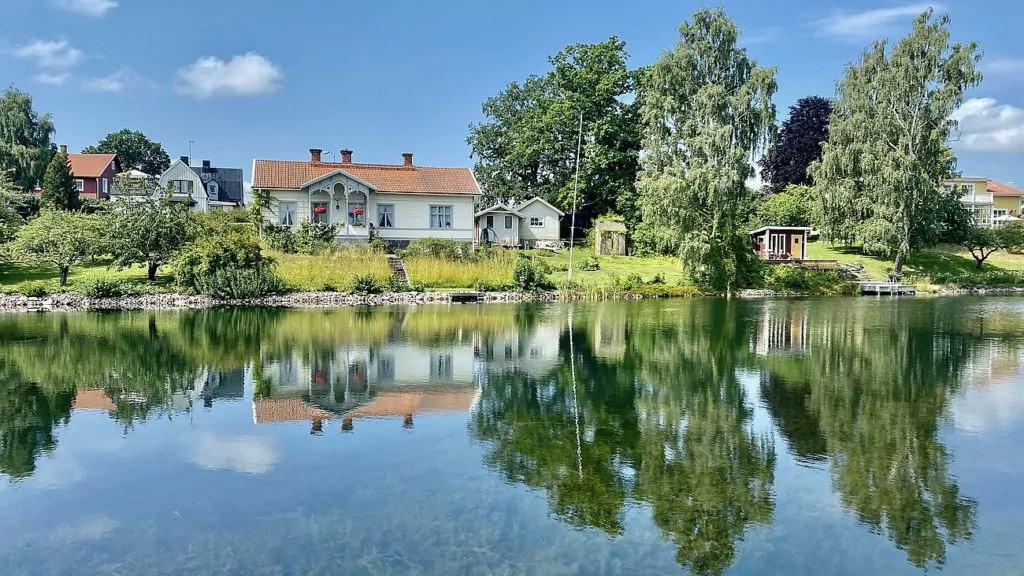
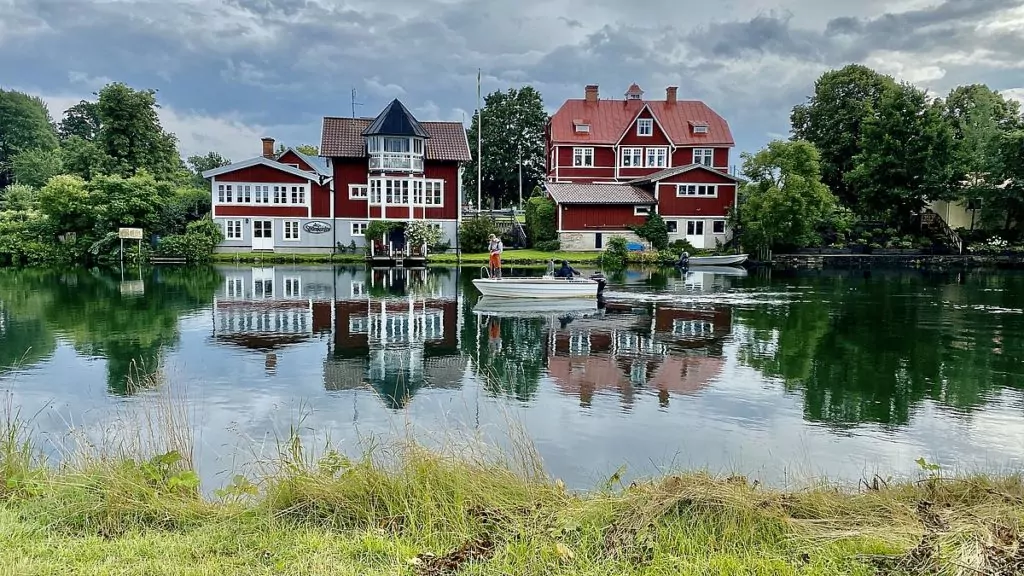
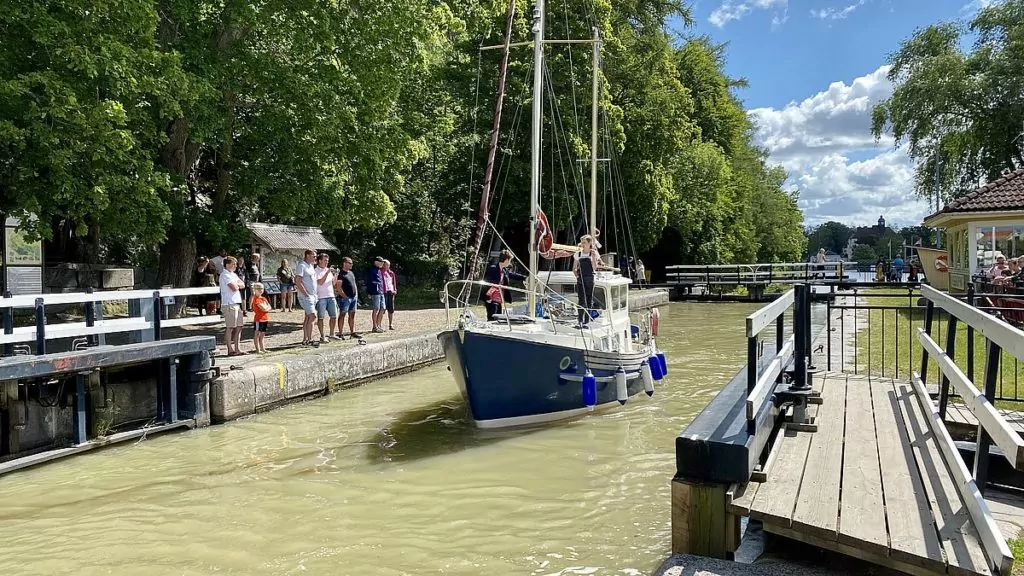
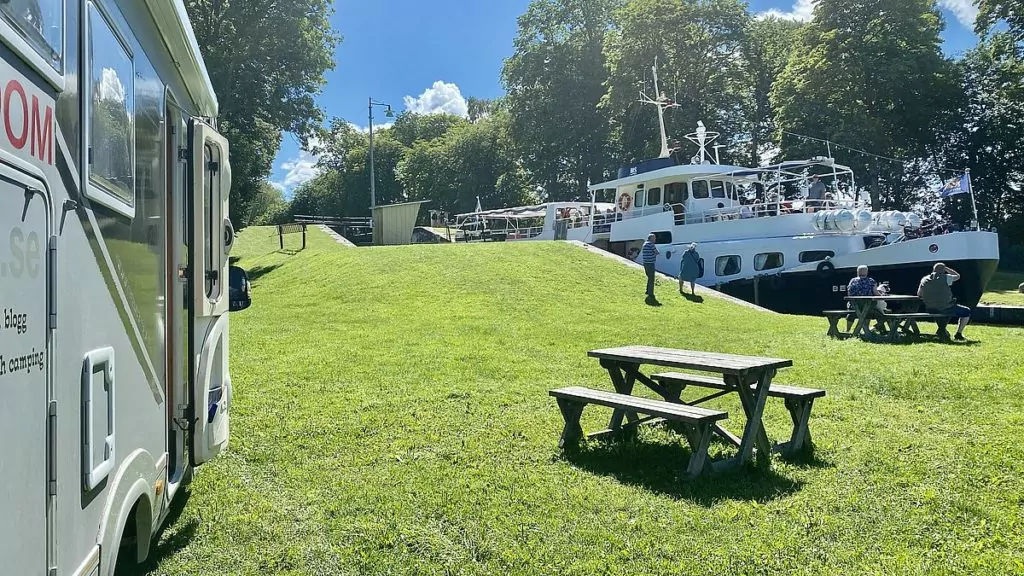

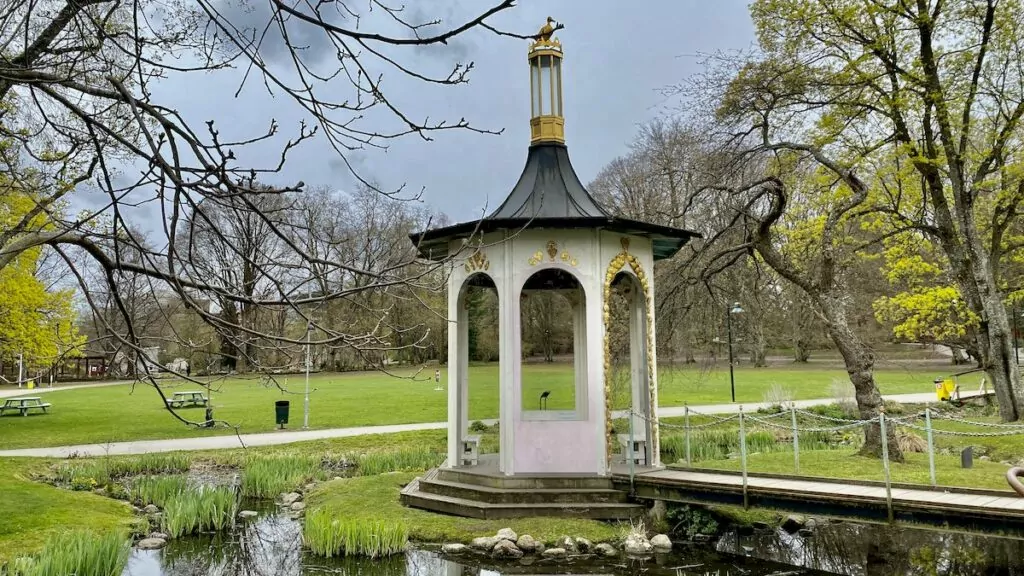
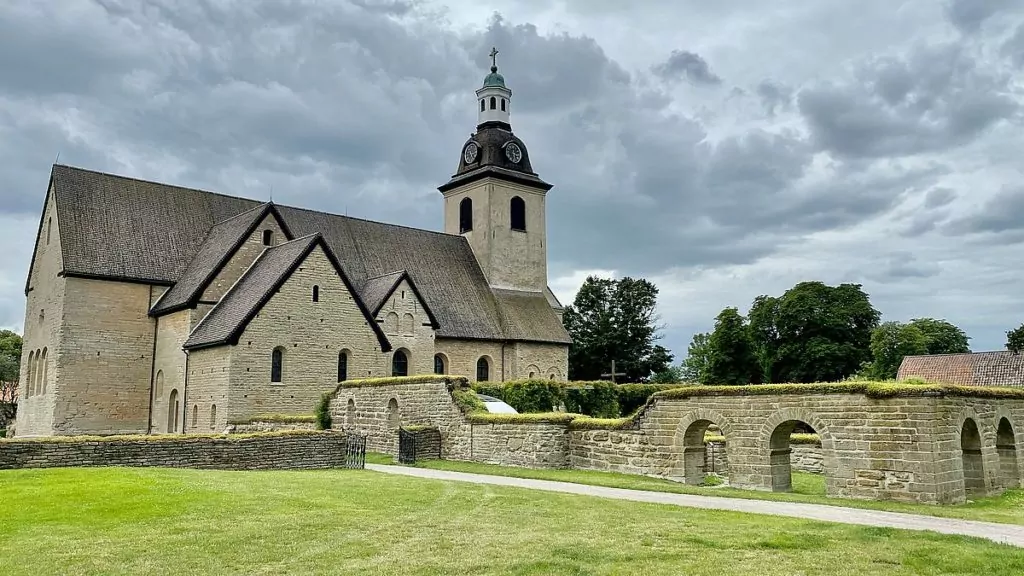
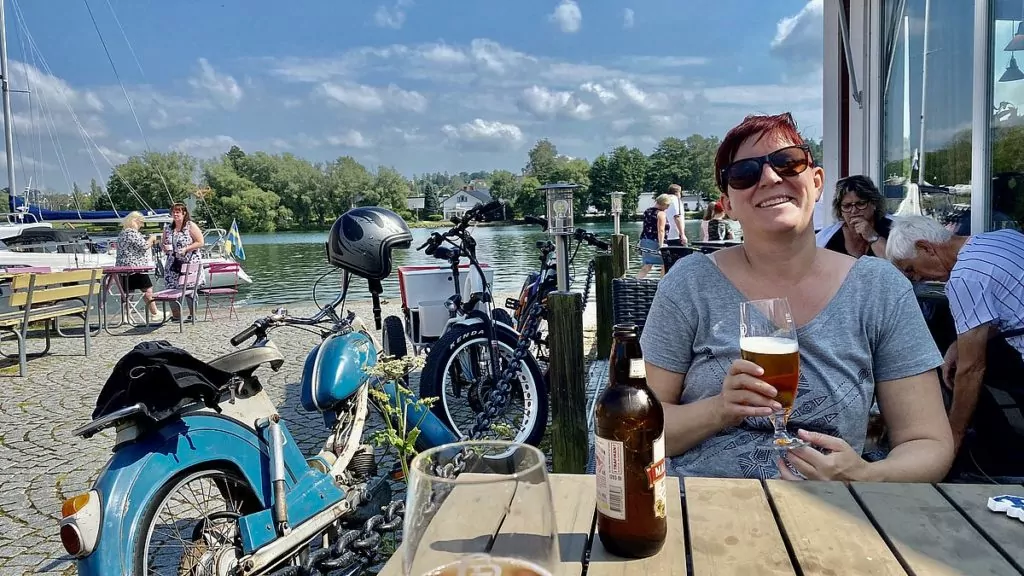
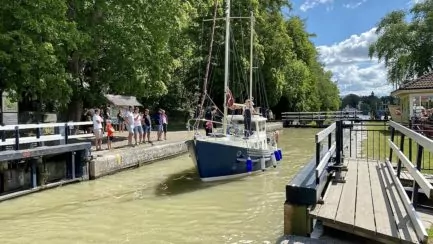
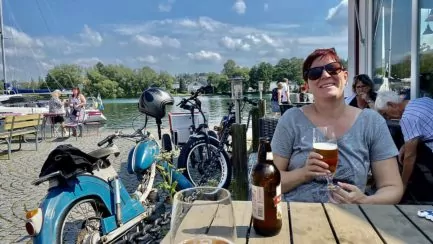
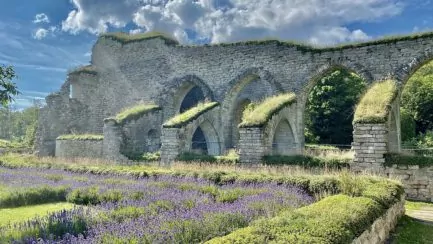
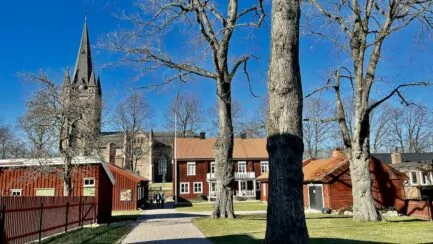
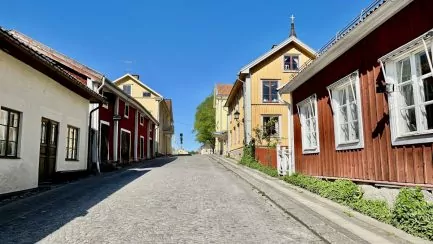
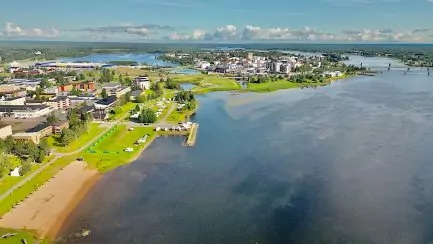



Ruth i Virginia says:
Besides all the interesting things you write about, I must say,
that I don't think I've ever seen so many photos with completely
incredible cloud formations. Look at the sky behind the castle!
The clouds shoot straight up like a firework. Super!
19 July 2020 - 6:56
Helena says:
Agree with you that the clouds are nice! 🙂 (Then I have noticed that cloud formations are enhanced if you take photos with a wide angle. One of the photos, where the castle is straight from the front in a large picture, is taken with a wide angle, because we were standing in a courtyard and otherwise did not get the whole castle in the picture otherwise).
19 July 2020 - 10:33
Frizz says:
I have visited and would have liked to stay to see more of the history, but with a 1.5 year old in tow and the child's impatient father, I will have to wait...
19 July 2020 - 7:29
Helena says:
1.5 year olds have some other interests, so I understand that 😉 But Vadstena is still there for possible more visits in the future 🙂.
19 July 2020 - 10:34
Matts Torebring says:
We were there with the small car yesterday afternoon, but we didn't see you. Vadstena has been one of our weekend favourites in autumn, winter and spring. During the month of July we have not even thought of going there with a motorhome. Yesterday we were happy that the motorhome was at home in the garage. We have never seen Vadstena so crowded before. I almost felt sorry for everyone who stood on the "Boat parking next to the snusktoan".
We have probably been to all places except Ladugård 206, which we have not seen. We have had dinner at Klosterhotellet a few times, even slept over there and had breakfast in the King's Hall since the 13th century. It was powerful. Maybe you missed the fantastic Omberg, when you were so close.
19 July 2020 - 9:19
Helena says:
What fun that you were also there recently! Would have been fun to see 🙂 It was probably the day before yesterday we were there (is often about a day behind with the blog posts, can also be more sometimes). Sleeping over in the King's Hall sounds really cool! 🙂
19 July 2020 - 21:11
Geddfish says:
I have visited Vadstena on two occasions - together with my youngest daughter - and also stayed at the monastery hotel for two nights on both occasions.
The first time in the summer of 2015 and now in December when there was Christmas signage. Have been everywhere you describe. Absolutely fantastic historical places and buildings. Really like Vadstena. Nature, town, buildings, church, castle, everything. A gem.
19 July 2020 - 9:25
Helena says:
Sounds cosy to stay at the monastery hotel! And interesting with the Christmas signage, I can imagine that it is nice in Vadstena at that time too!
19 July 2020 - 21:12
Resfredag says:
Vadstena is a real little gem, so heavenly beautiful! For food, I can really recommend Restaurang Hörnet (SO good!) and coffee at Gamla Konditoriet. Have a continued wonderful trip!
19 July 2020 - 10:32
Maria /Magnolia Magis says:
Vadstena is so nice to just be! We used to go here at least once a year. Partly slept over in the motorhome by the water and partly as our annual Vättern round... by car! You can get around in a day and stop in Karlsborg, Askersund, Vadstena, Gränna, Bankeryd (grandchildren) and Hjo. By the way, there is a folk high school for opera in Vadstena. My brother went there. Will it be Askersund next then? Coffee at Klockargården or Vägkyrkans balcony? Hope you get nice weather! ?
19 July 2020 - 10:40
Helena says:
Maria/Magnolia Magis, yes we read about the opera school when we walked around the castle. What fun that your brother went there! And thanks for more tips, there are sooo many nice places in the hooks it feels like 😉.
19 July 2020 - 21:15
Helena says:
Travel Friday, indeed, we liked Vadstena a lot! Thanks for more tips! 🙂
19 July 2020 - 21:13
bmlarsreseblogg says:
Of course, we have visited beautiful Vadstena a number of times. My funniest memory from there is when we courted a colleague with a medieval guild quite a few years ago. After dinner in "burlap" clothes, we went on a guided night walk!
In September, my "girl group" has booked two nights at Klosterhotellet to experience Vadstena!
19 July 2020 - 13:04
Helena says:
Medieval guild sounds super fun! 🙂 And what fun to go there with the girl gang in September, you will surely get super nice!
19 July 2020 - 21:16
Felle Fernholm says:
You forgot to mention the Lions Flea Market with incredibly cheap products and all the profits from the sales go to charity.
The flea market is located behind Slottsgården
19 July 2020 - 17:47
Helena says:
Yes, we missed that. But thanks so much for the tips!
19 July 2020 - 21:16
Monika Fransson says:
Many thanks for your nice pictures and text along the Göta Canal.
19 July 2020 - 18:40
Helena says:
Glad it is appreciated! Thank you for writing Monika! 🙂
19 July 2020 - 21:17
BP says:
Also reacted to the cloud formations, so cool. Gerd has blogged from Vadstena a few times so I recognised a bit there. What magnificent buildings, and what luck you had that the weather was canoeing.
19 July 2020 - 20:55
Helena says:
These are really impressive buildings! And between them little cute houses 🙂 It's easy to like Vadstena!
19 July 2020 - 21:17
Rolle o Carina says:
Well reported and so nice pictures you captured with the camera too!
We have been there a few times over the years, not in July?
Take care.....
19 July 2020 - 21:40
Helena says:
Glad you liked the post! And yes, in July there are of course many tourists ...?
20 July 2020 - 6:55
Lotta says:
hello
Have read some of what you have written before. We were at Borghamn beach and thought we saw that you were inside and turned around?
Hope you have nice days ahead.... we went on to little Öjaby camping near Växjö (the first campsite where we got afternoon ice cream at the motorhome) ?
Have a nice summer!
19 July 2020 - 22:05
Helena says:
Hi Lotta! Yes, we were there and spinning? Glad you saw us! We bought smoked whitefish and checked the site, but we always come too late ? Continued to Alvastra instead. Hope you have a continued nice trip!
20 July 2020 - 6:58
Lena - gott för själen says:
But oh how interesting. Have of course heard about Vadstena and St Birgitta, but never been there.
We chose between Östergötland and Värmland for this year's holiday trip. The choice fell on Värmland. So we have all that cosy stuff that you show, in front of us another time.
Hug Lena
20 July 2020 - 5:51
Helena says:
Värmland is of course also nice! And then you have all this beauty left??
20 July 2020 - 6:59
Sessan says:
Perfect! Thank you so much for this super presentation of Vadstena. We have been advised by good friends to go there but I have never understood the point of it. Now, after reading this blog post, I understand why you are going there. Take it next long weekend we can be free!
Thanks for a great blog!
/Sessan
29 July 2020 - 22:05